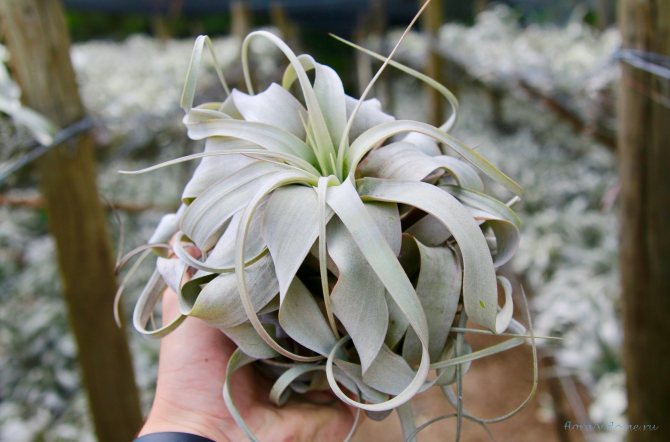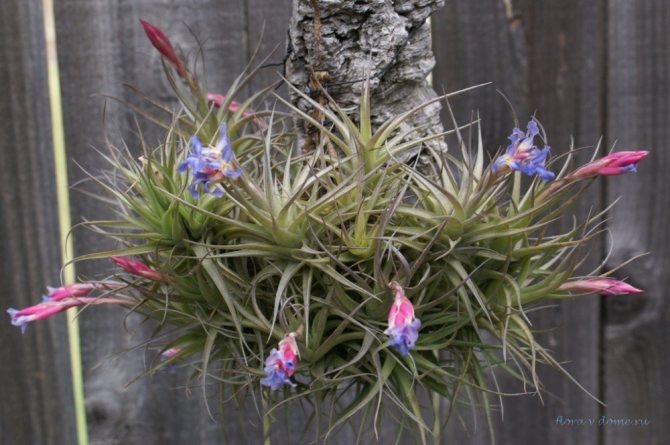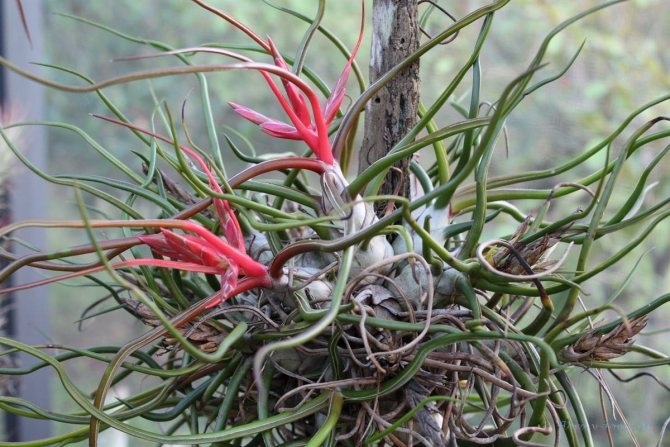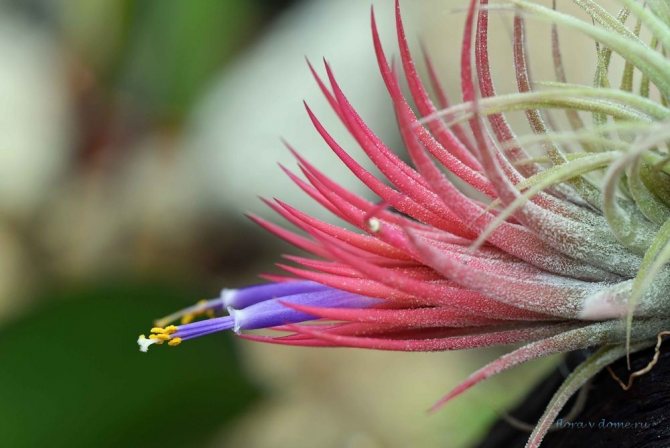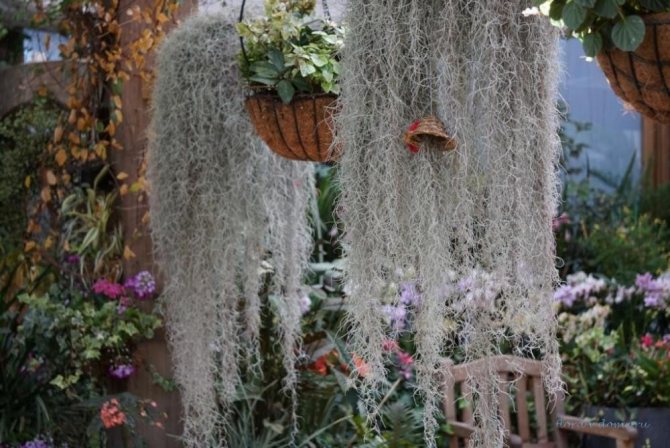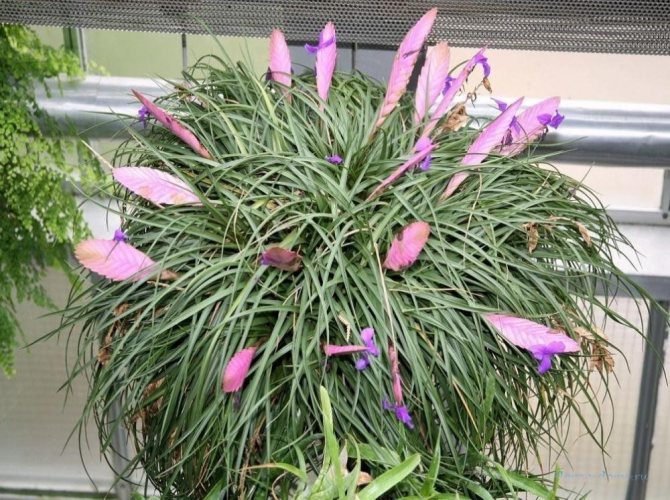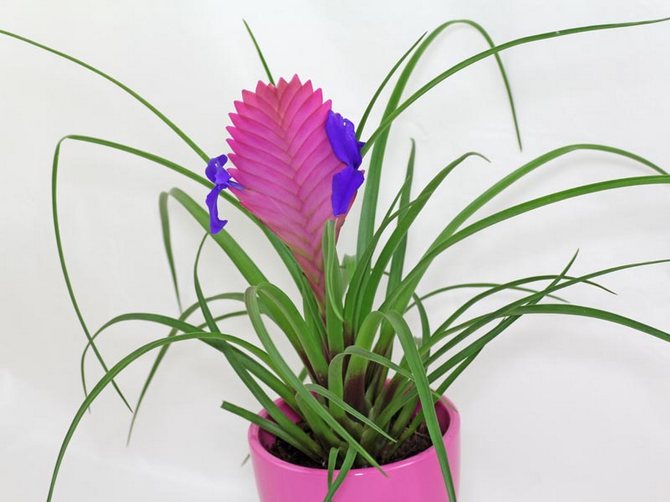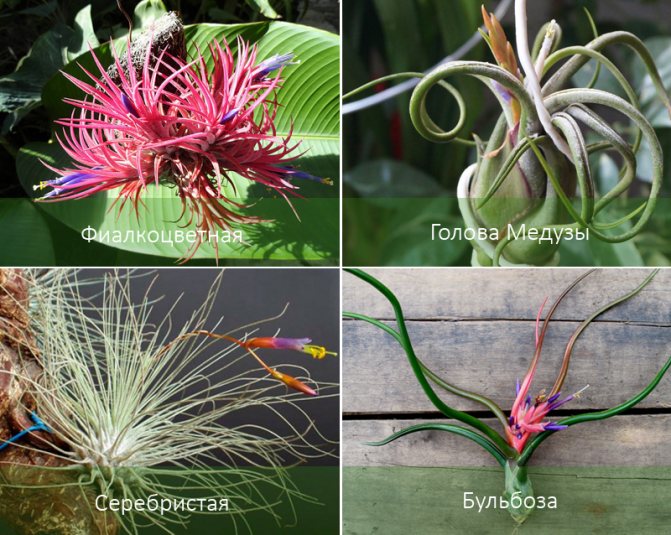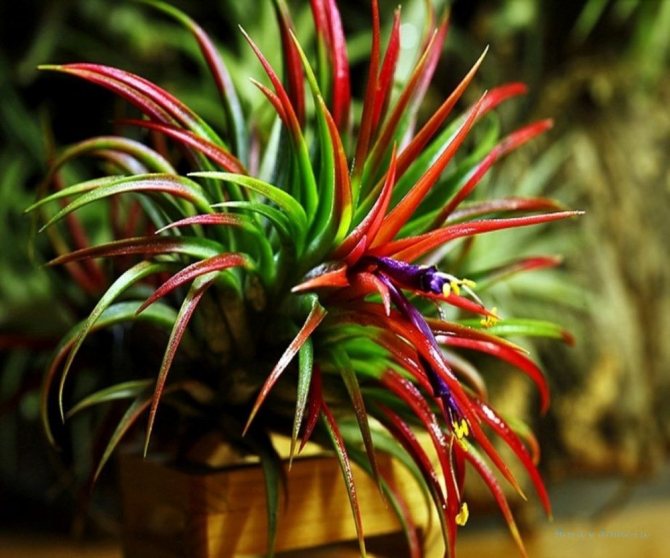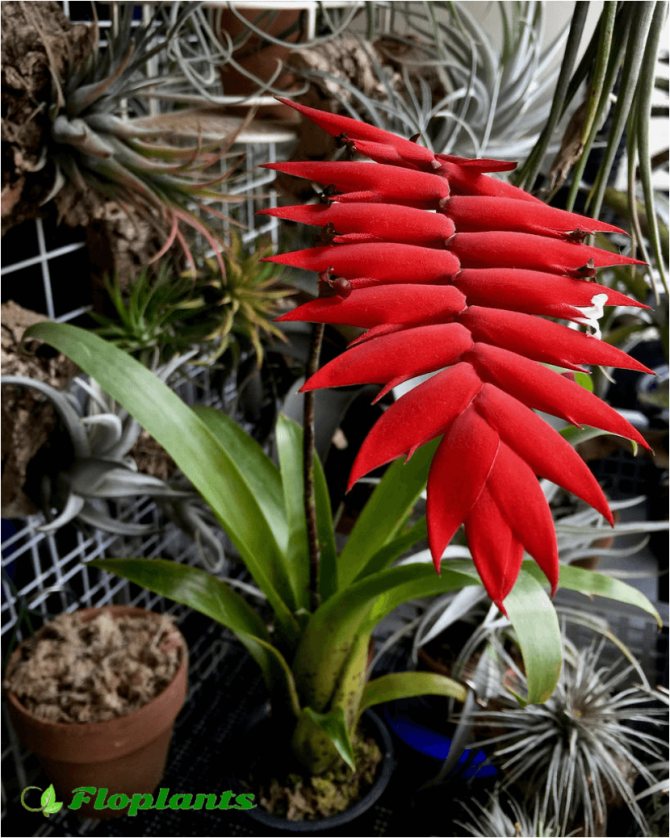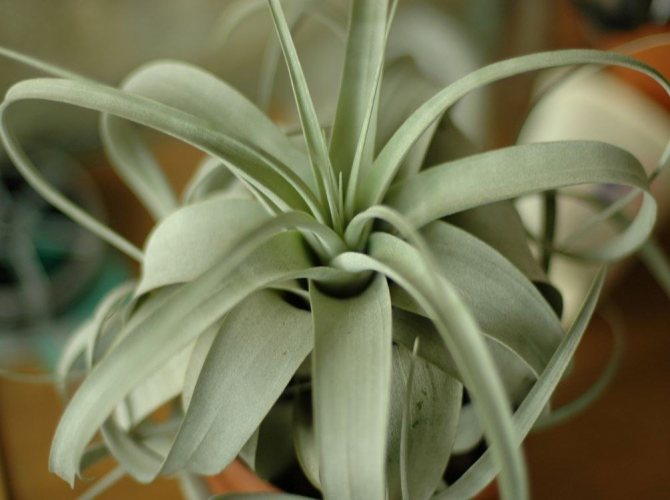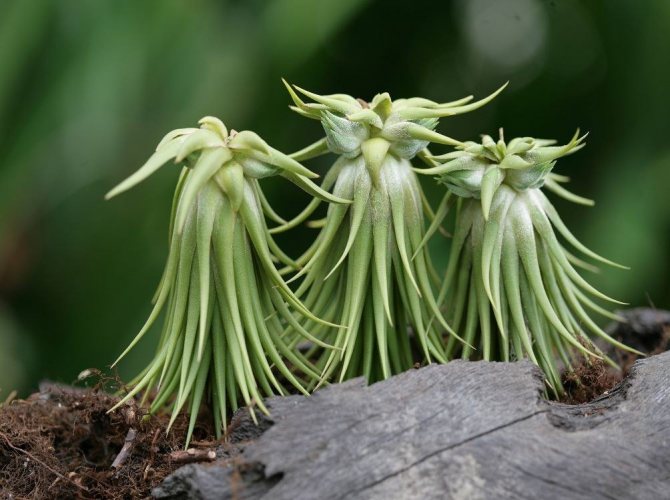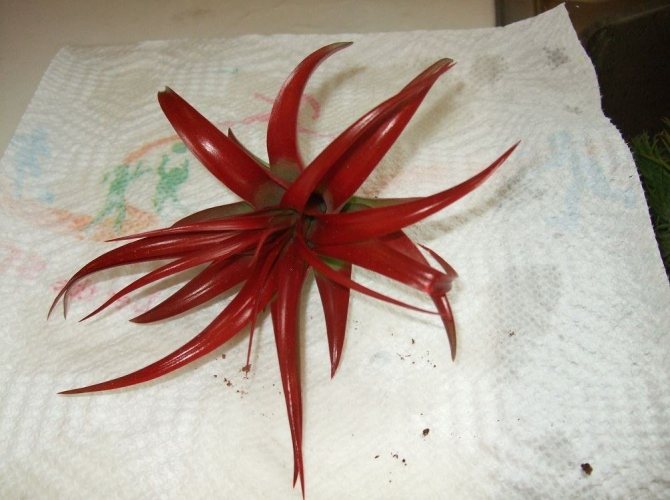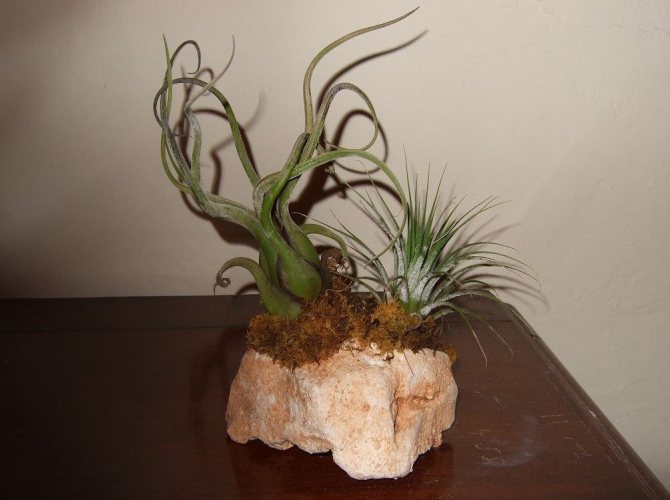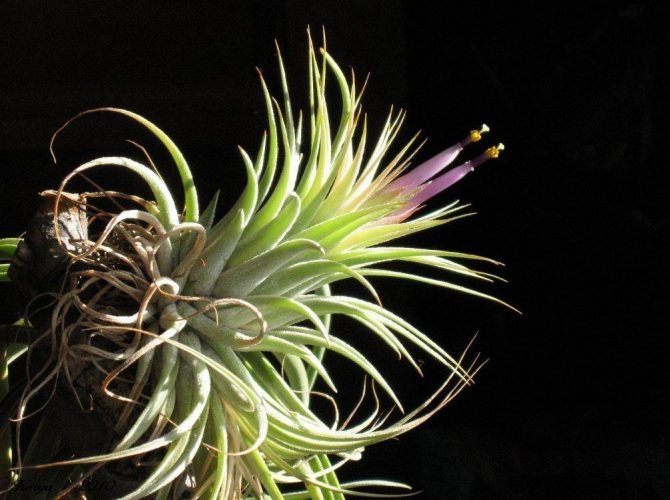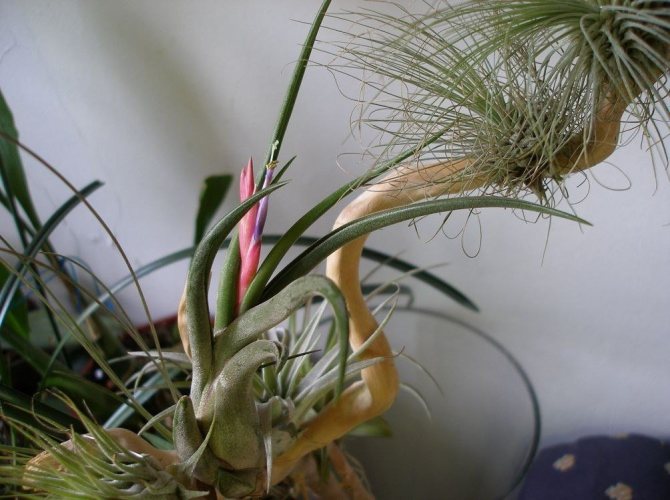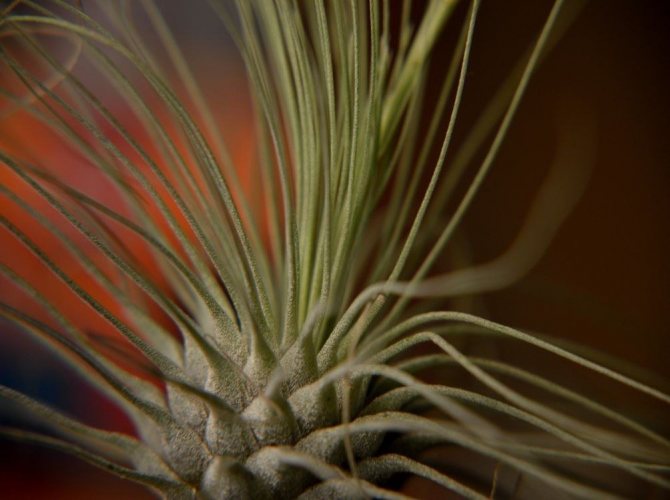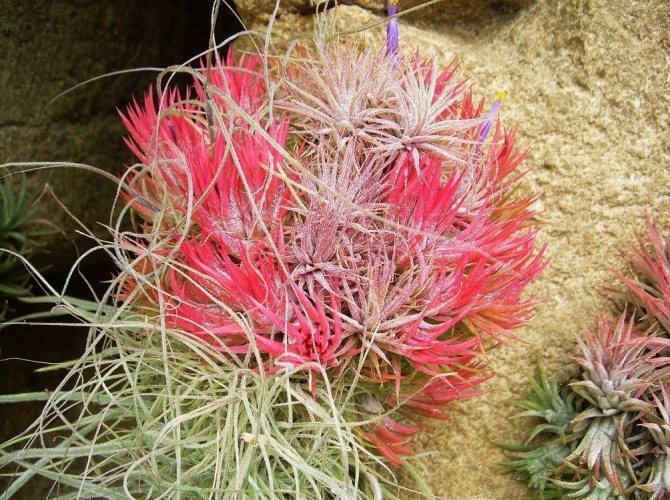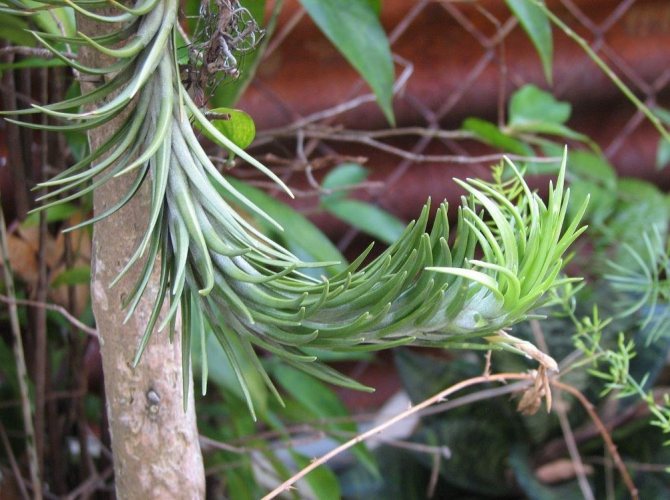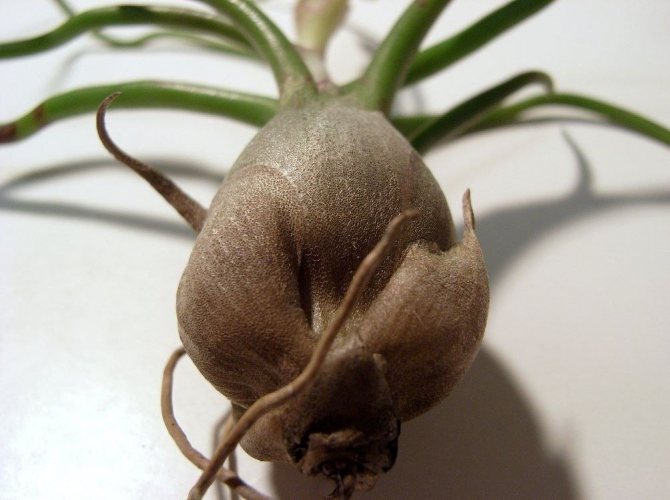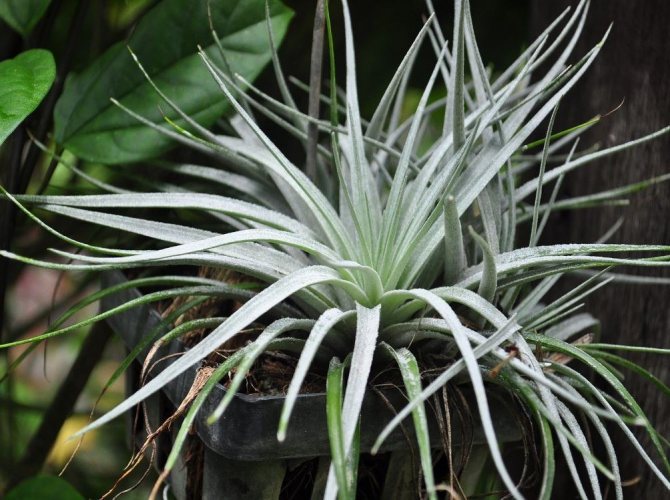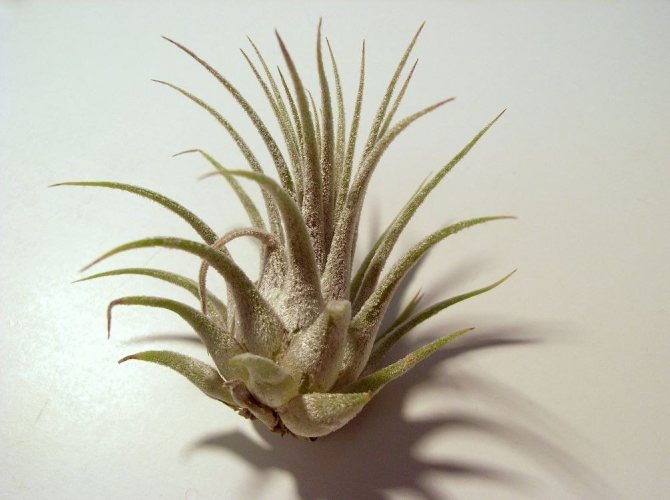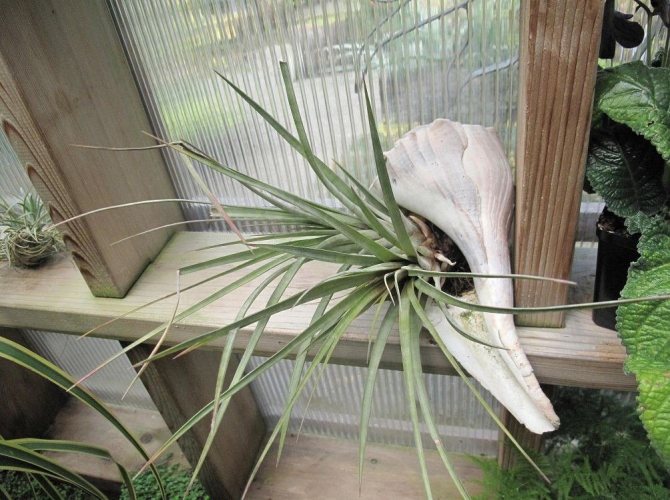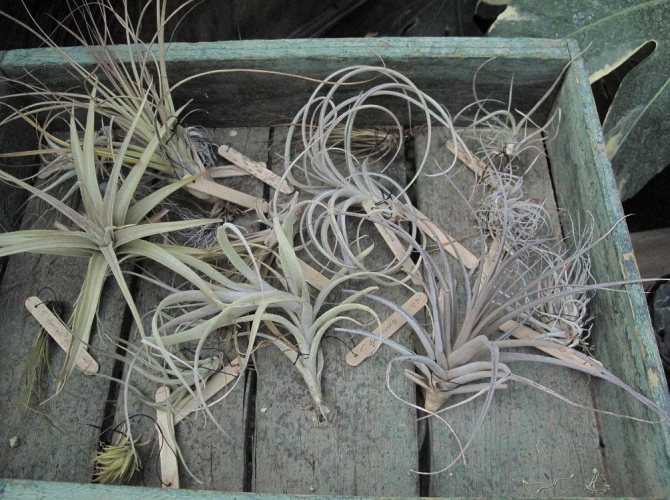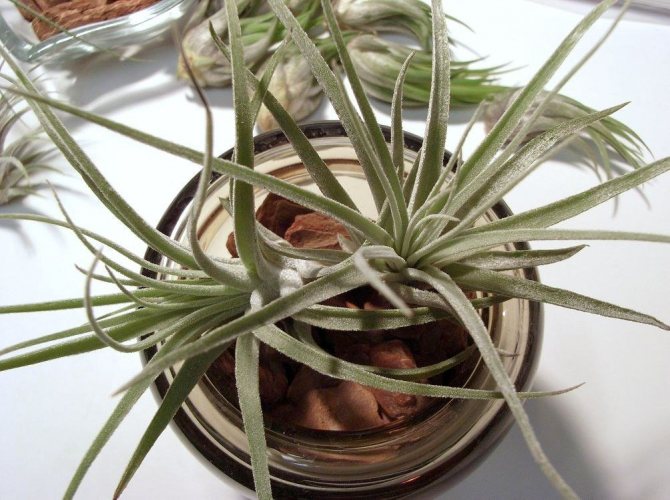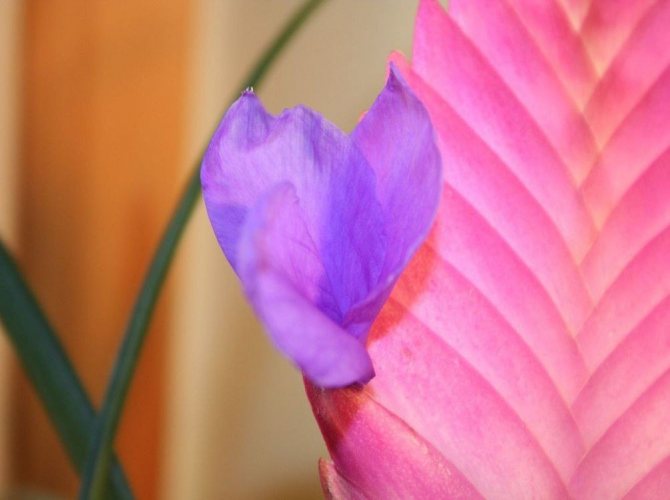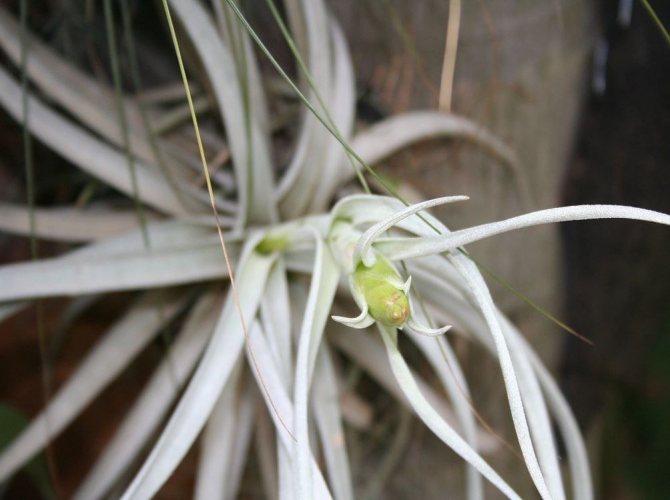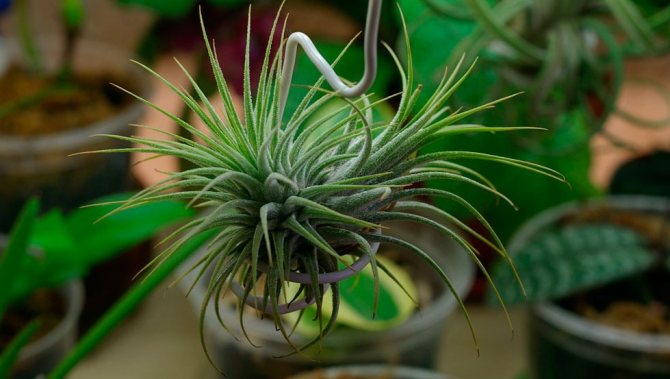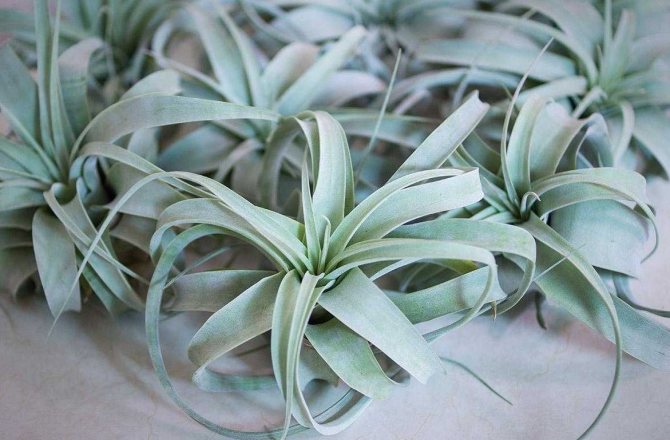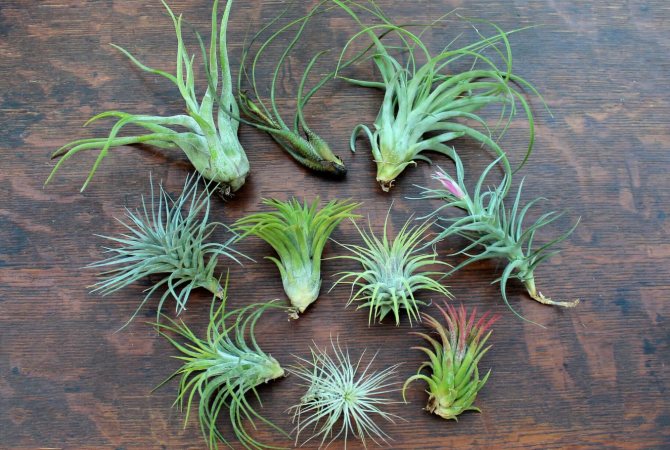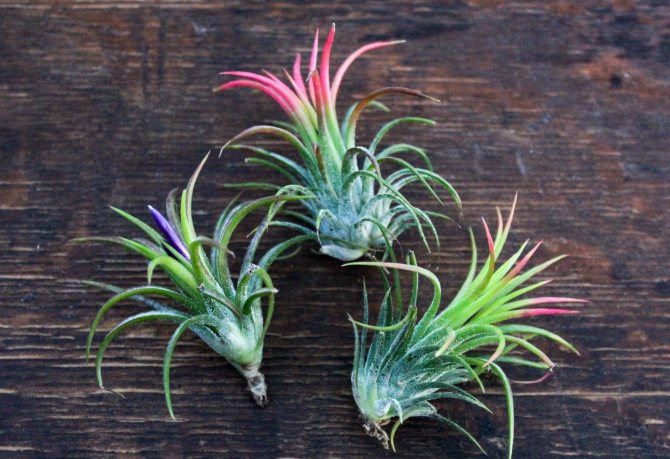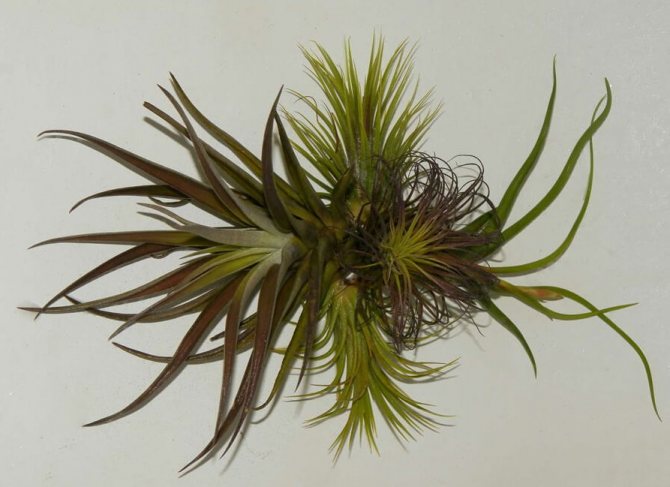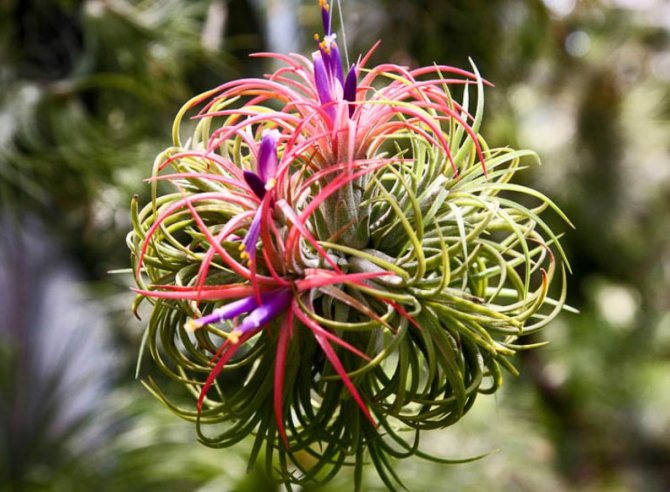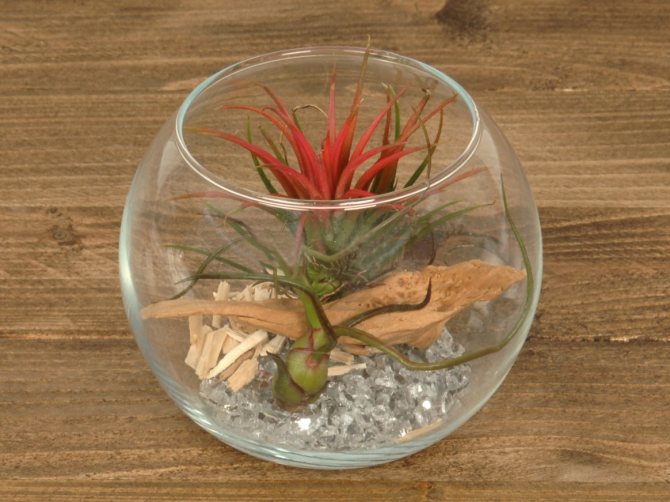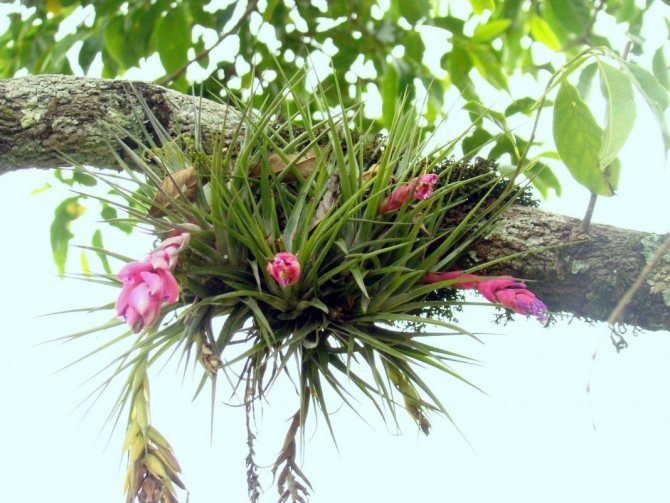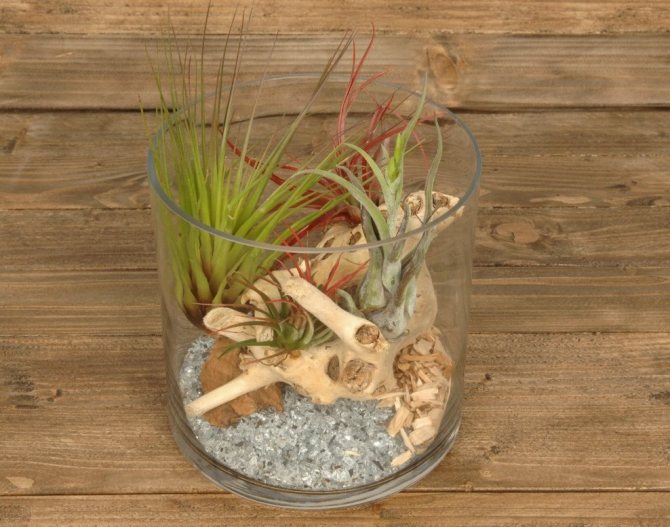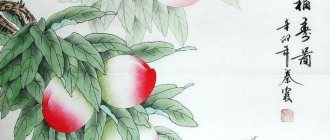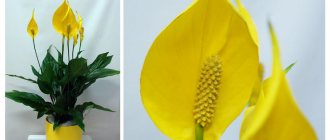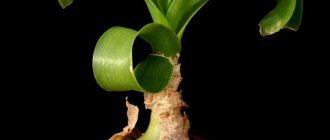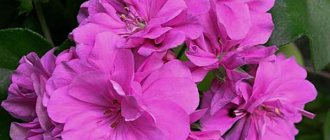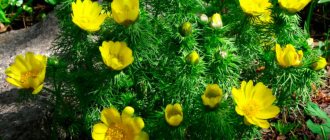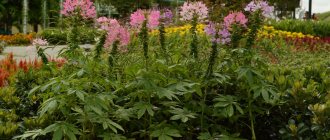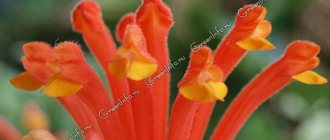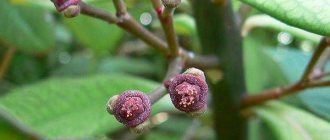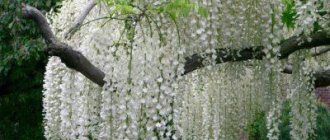Tillandsia is a perennial herb from the bromeliad family. In nature, it can be found in America (from the south of the United States to Chile). The numerous and varied genus is represented by epiphytic and terrestrial varieties. Domestic florists grow exotic and amazing tillandsia as an indoor flower. In leaving, he is not capricious, but he amazes with unusual leaves and inflorescences. Sometimes they look like the feathers of fairy birds or the head of a jellyfish, and sometimes other mythical creatures.
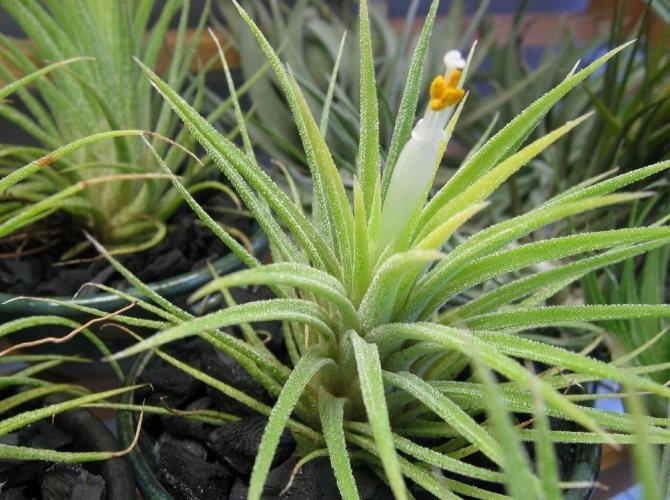
Here you will find out:
Description: general characteristics
Under natural conditions, representatives of the genus Tillandsia, and there are about 700 species of them, grow in various climatic conditions in Chile, USA, Mexico and Argentina. The genus was named by the great Karl Linnaeus in honor of the Finnish professor of medicine Elias Tillands. Translated from Swedish, till lands is translated as "by land", "by land". In indoor floriculture, only a few species are grown.
The genus Tillandsius has united two groups of plants that differ significantly from each other:
- Potted (green tillandsia). Plants develop in ordinary soil, produce beautiful rosettes of leaves, which serve as a spectacular backdrop for inflorescences.
- Epiphytic tillandsia, rather rare, slightly capricious plants that attract not by flowering, but by unusual foliage. Some varieties have a hard stem, they are completely deprived of it. Epiphytes are distinguished by elongated narrow leaves up to 25 centimeters long, and their width barely reaches one centimeter. Foliage color ranges from light gray to deep green.
Flat leaves with scales form rosettes of potted tillandsias. Some varieties have long, smooth leaves. From the bright pink bracts, a large inflorescence is formed, which outwardly resembles an ear. Green Tilandsia live in houses for no more than five years.
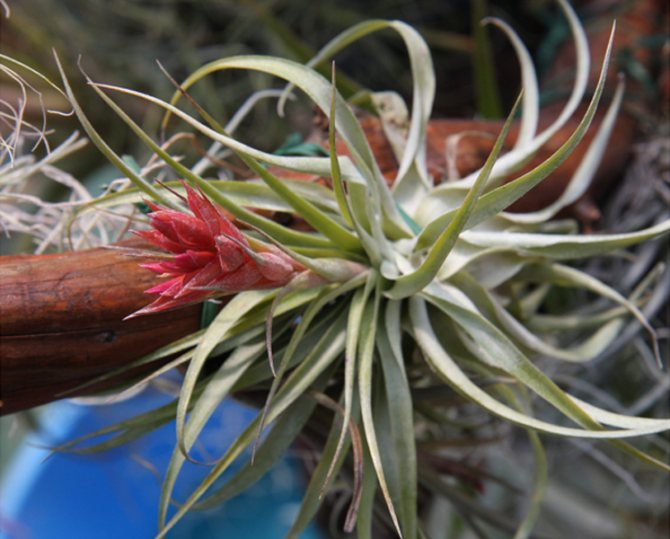

Description of the plant
Tillandsia is a herbaceous, slow-growing perennial. Most of the representatives of the genus live on snags and trees of the rainforest. Some flowers have adapted to life on the rocks. All of them have a fairly short and fragile rhizome, which serves only for fixing. The main food is through the leaves.
The height of an adult tillandsia is 5-60 cm. Rigid leaf plates have a narrow, slightly curved shape. On the dark green surface of the leaf, red-brown streaks and stains sometimes appear. The length of the leaf ranges between 5 and 35 cm and the width is 3-12 mm. The entire leaf or only part of its surface is covered with tiny scales that absorb water and nutrients from the air.
In September, from the center of the leaf rosette, a striped inflorescence blooms on a strong peduncle. The buds are flattened and hidden by rigid crimson or orange perianths. They are located in pairs on both sides of the stem. Flowers bloom 1 or 2 at a time. Soft violet-blue petals resemble moths sitting down to rest on a bright ear. The diameter of the opened rim is 20-25 mm. In total, there are up to 20 buds on the inflorescence, their flowering continues until January.
After flowering, the rosette dies off and the tillandsia enters a dormant state. In the next season, new shoots are formed from the formed buds. One socket lasts up to 5 years.Even before the complete death of the mother plant, children can be found on it. It is recommended to separate them in the year of appearance and grow them yourself.
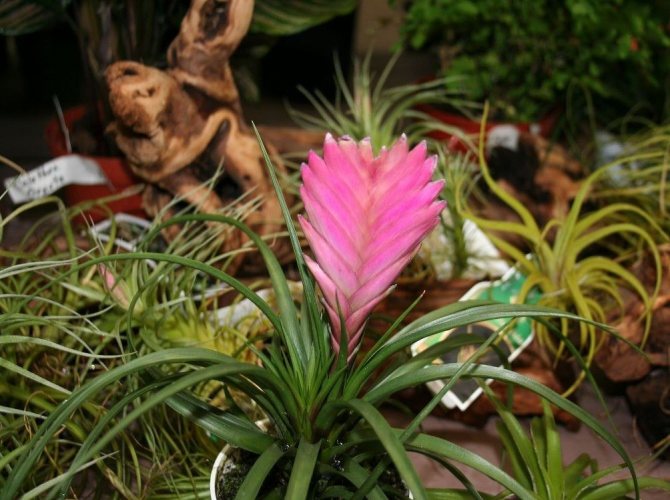

Silvery
A very spectacular tillandsia, the photo of which you can see below, has very narrow leaves, for which it is sometimes called filiform or hairy. At the base, they expand, bend or bend in a spiral, rather bizarre and disorderly. At first glance, not everyone can guess that there is a living plant in front of him. The birthplace of this natural miracle is Cuba, Jamaica, the countries of Mexico. And in July, the beautiful scarlet flower of Tillandsia silvery drives out.
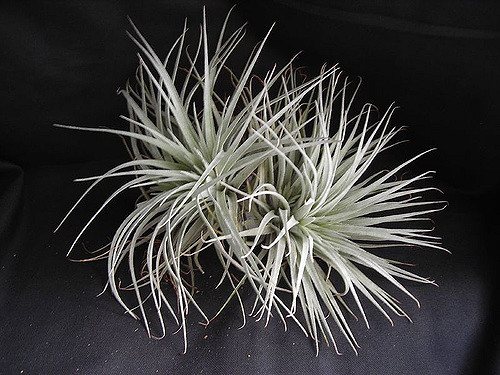

Watering
Potted tillandsias need regular, moderate watering. In the summer, the soil in the pot should be slightly damp all the time. It is also necessary that there is water in the outlet.
In winter, the regularity is reduced. The soil in the pot should dry well between waterings.... 15-20 minutes after the procedure, the water remaining in the pan should be drained.
Water for irrigation should be at least 20 degrees. Rain or melt is used. Plumbing is not suitable because the plant does not tolerate the chlorine in it.
Atmospheric tillandsias receive nutrients through the leaves, so they do not need watering.
Violet-flowered tillandsia
This species looks like beautiful corals. Small rosettes, no more than 5 cm in height and width, consist of curved thin leaves. Tillandsia violet-flowered can gain a foothold on any support and develop in almost any climate. The curved silvery leaves are very tough to the touch and are tapered. Before flowering in summer, the inner leaves of the plant turn red. The inflorescences are spike-shaped, painted in blue-purple color, and therefore the red upper leaves seem to be part of this magnificent flower.
Tillandsia species
Among the variety of tillandsia species, two slightly different groups can be distinguished:
- Atmospheric tillandsia, with tough leaves, very narrowed to the tips, covered with dense scales and catching nutrients and water from the air, are hard-leaved tillandsia
- Tillandsia thin-leaved - forming a rosette of leaves of a linear or acute triangular shape, they form very spectacular bright inflorescences
The first group of tillandsia is usually called "aa-gray" tillandsia.
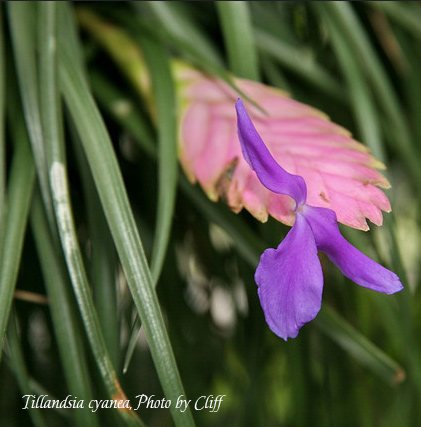

Tillandsia blue Tillandsia cyanea is a small epiphytic plant that forms a rosette. Leaves are linear, green, with a reddish tint, up to 30 cm long and about 1 cm wide, leaf surface in small scales. The peduncle is slightly curved or straight, short, the inflorescence is a spike, wide and flat in shape. The bracts are arranged in two rows, tightly overlapping each other with a herringbone, the color of the bracts is from light green to pink and red, they are up to 5 cm long, completely hide the sepals. The flower petals are bent, have a rhombic shape, and a delicate purple color. This plant can be found more often than others in free sale in flower shops.
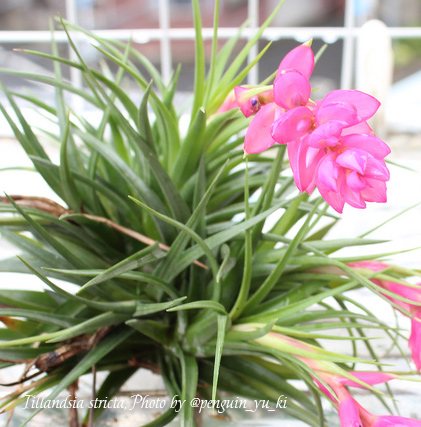

Tillandsia protruding Tillandsia stricta is a small epiphytic plant that forms a dense rosette. The leaves are narrowly triangular, covered with gray scales, 7 to 20 cm long, and about 0.5-1 cm wide. The peduncle is short, curved. The inflorescence is an ear. The bracts are arranged in a spiral, they are in color from pale pink to bright pink, filmy, oval in shape. The lower bracts are long and cover the petals of a bluish or purple color.
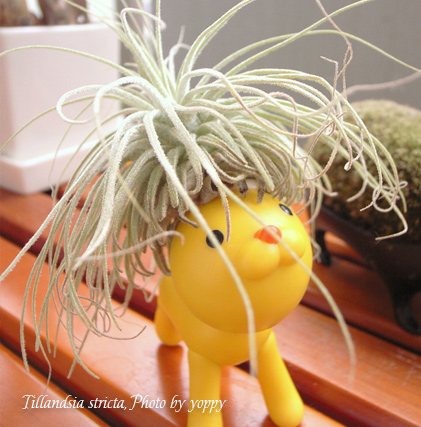

Tillandsia usneiform Tillandsia usneoides - "Louisiana moss" is an epiphytic plant with thin stems, the length of which can reach several meters. The leaves are filiform, about 1 mm wide and 5 cm long, arranged in two rows. Both stems and leaves are densely covered with scales, from which the plant has a gray color.A single flower with scaly, oval bracts and pale bluish or pale green flowers.
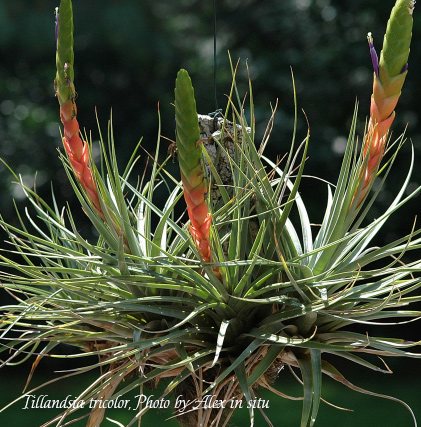

Tillandsia tricolor Tillandsia tricolor is a small epiphytic plant that forms a rosette. Leaves are linear, green, up to 20 cm long and about 1 cm wide, leaf surface in small dense scales. The peduncle is long and straight, the inflorescence is either a simple spike, or a complex of several ears. The bracts are long, oval in shape, the lower ones are bright red, and above are yellow and then green. Sepals leathery, glabrous, accrete at the base. The flower petals are rhombic, purple in color.
Tillandsia species that are suitable for growing in terrariums and aquaterrariums:
- Tillandsia abdita
- Tillandsia albida
- Tillandsia brachycaulos
- Tillandsia bulbosa
- Tillandsia concolor
- Tillandsia duratii
- Tillandsia flabellata
- Tillandsia funckiana
- Tillandsia geminiflora
- Tillandsia harrisii
- Tillandsia hondurensis
- Tillandsia ionantha
- Tillandsia ixioides
- Tillandsia juncea
- Tillandsia latifolia
- Tillandsia mitlaensis
- Tillandsia neglecta
- Tillandsia paleacea
- Tillandsia pseudobaileyi
- Tillandsia purpurea
- Tillandsia stricta
Louisiana moss
An unusual plant is a thin and long (up to 8 meters) shoots that naturally hang from rocks and tree branches. Typical representative of atmospheric tillandsia, which has no roots. The plant receives nutrients from rainwater, which dissolves accumulated dust, waste products of microorganisms, and plant residues on the surface of the leaves. It is noteworthy that at home, Louisiana moss can not be fixed on a support - this tillandsia can, for example, be hung on a wall or pieces of furniture. The plant needs to be able to grow downward.
Reproduction methods
Tillandsia reproduces by seed and vegetative methods. Only potted varieties can be grown from seeds. In the spring, they are distributed on the surface of the sandy-peat soil and slightly pressed into it. Crops are sprayed and covered with foil. Containers with seedlings are kept in a room with moderate lighting and an air temperature of + 18 ... + 20 ° C. Seedlings appear within 2-3 weeks. After 3 months, 2-3 true leaves are formed on the plant, and it can be transplanted into a separate pot.
All types of tillandsia form babies. A process with small roots of its own can be separated and transplanted. Its dimensions at the time of rooting should be about half of the mother's dimensions. Rooting of green varieties is carried out in the soil. Atmospheric plants are fixed on a snag or in a special container. It is filled with sphagnum, charcoal and peat. Tillandsia usneiform reproduces by cuttings. It is enough to separate any shoot and fix it. It will continue to develop as a mother plant.
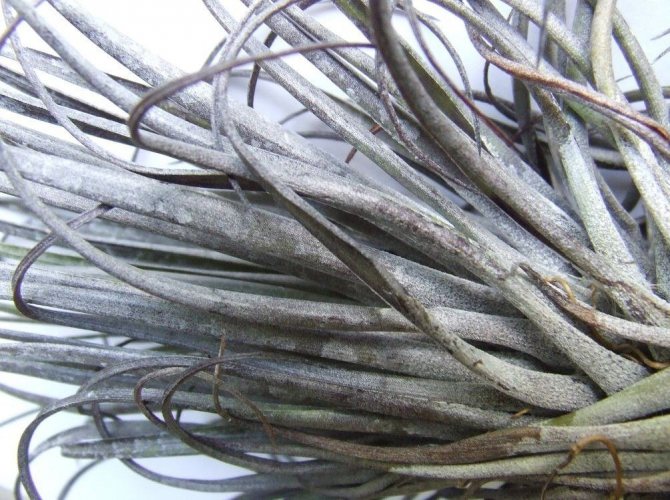

Tillandsia usneiform: description
The next species, which we want to tell you about, is the most popular in comparison with the rest of the genus. That is why we will dwell on its description in more detail. Tillandsia usneiform has other names, for example, Spanish moss. In reality, this is not moss, because the plant reproduces not by spores, but by seeds. The lightest seeds are carried by the wind in different directions. Falling on fertile soil, they form new shoots.
This plant is called Spanish moss for its external features and its ability to survive in conditions where other crops die. Over time, the lower stems of the plant die off, and new ones rush up.
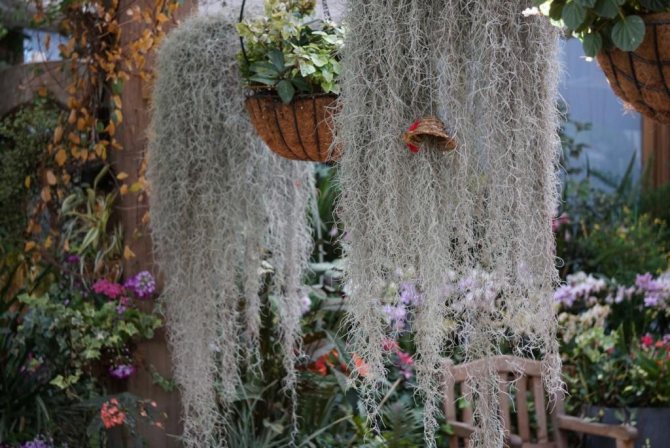

Transplant rules
For planting tillandsia, wide and shallow containers are used, since the rhizome is very modest in size. The plant does not need regular transplants. It is only necessary to periodically replace the old substrate. If a large number of children are formed, they need to be separated and transplanted into their own pots. Atmospheric specimens do not need a pot at all. In stores, they are sold with a piece of stump or stone. During transplanting, it is important to be careful not to damage the fragile plant.
The soil for tillandsia should be well-drained and fibrous. It is best to use substrates with a neutral or slightly acidic reaction.The presence of lime in the soil is unacceptable. Suitable soil mixtures for orchids and bromeliads. You can compose them yourself from:
- sphagnum moss;
- pieces of pine bark;
- crushed charcoal;
- deciduous land;
- fern roots.
Every spring, the topsoil is replaced with a new one.
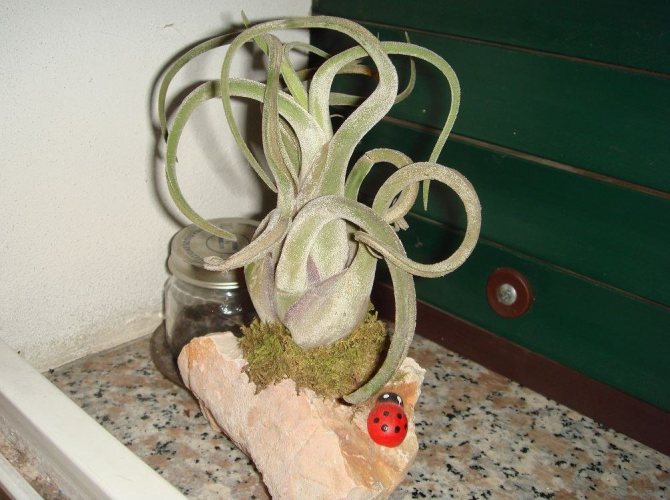

External features
Spanish moss wraps its soft thin twigs around a nearby plant - the trunk of a huge tree or bush. Filiform leaves about eight centimeters long and about one centimeter wide are arranged in two rows on highly branched, thin stems, which are covered with whitish hairs. Their reflective properties make Usneiform tillandsia silver-gray.
As we have already noted, this plant has no roots, it hangs from the trees with huge lace cascades of not too long shoots, clinging to the bark of trees with threadlike stems. The length of the shoots does not exceed 20 cm, but there are a lot of them, and, even when they die off, they do not fall off. New young shoots cover the old ones and over time they intertwine and grow so much that they form silvery beards, the length of which can exceed three meters.
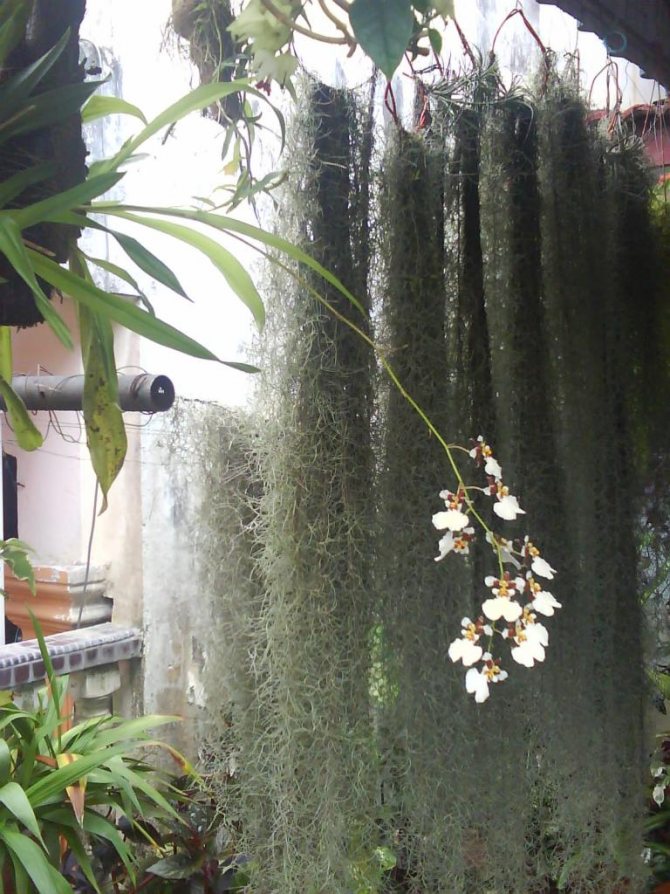

This gave another name to this species - the old man's beard. In strong winds, long "beards" cling to nearby neighboring trees, tillandsia shoots get stuck in their crown and continue their development there. In summer, this plant blooms with yellowish-light green small flowers.
Spraying
Especially atmospheric species need spraying. The procedure should be carried out daily in the morning with warm, settled water. On hot days, it is better to add evening spraying.
You can have a warm shower every 2 weeks... Usneiform Tillandsia can be completely immersed in warm water for 5 minutes.
Potted tillandsias also need daily morning spraying. However, when kept in cool conditions in winter, as well as during the flowering period, it is better to suspend the procedure.
Growing features: placement
Tillandsia usneiform does not need soil. Therefore, in search of this plant, pay attention in flower shops not to pots, but to decorative compositions on a piece of bark, wood, on a stone. So, when grown indoors, these plants can be attached to pieces of bark, trellises, wooden bars or to special structures for epiphytes, which can be purchased in stores, by the base of the outlet. For the same purpose, larch or cypress wood sawn with rings, beautiful, pre-well-washed roots and stones are suitable. Please note: it is very important to create comfortable conditions for the unhindered growth of shoots.
The following materials can be used to attach to the support:
- nylon threads;
- soft wire;
- waterproof instant glue, which is applied to the area of the stem and glue the plant to the bark or wooden block.
It is not recommended to use treated wood coated with varnish or paint for the manufacture of the base. The same applies to gypsum fiber and polyurethane foam.
Soon the plant will gain a foothold on the support and begin to develop the territory. There is one more thing to consider when placing the tillandsia on a support. Periodically, the plant, along with the support, must be immersed in water. This means that you need to think about it in advance. To make the flower less traumatic, fix it on a small bar, which is then placed on the composite structures in the room.
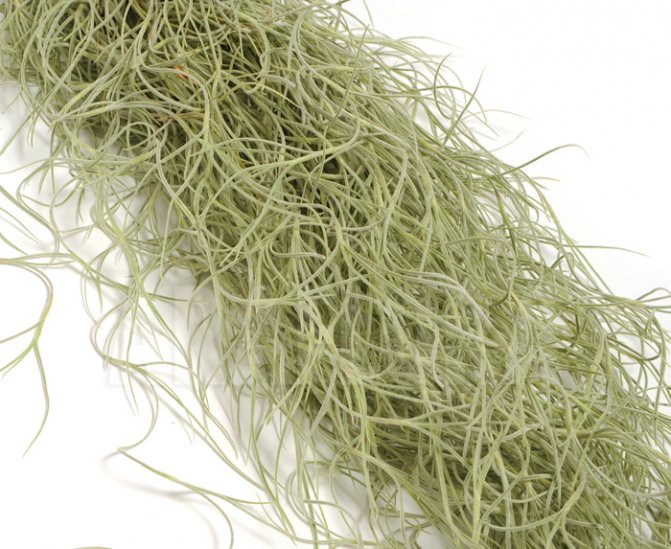

Some growers find it convenient to wrap the rosette in sphagnum moss, which will help provide additional moisture, which is so necessary for atmospheric tillandsia. If you do not plan to fix the flower on a support, use stones that must first be washed well, and then just put the plant on top. You just have to wait until it is fixed on the stones and sprouts.
An exotic guest can be placed in a beautiful flat vase or candy bowl, but make sure that moisture does not accumulate in the container. Excessive moisture can destroy the plant.
Many growers prefer to grow atmospheric tillandsia in a low flowerpot filled with bark pieces and fibrous material. Tie the plant to the pot with a soft bandage for added stability. After a few weeks, the flower will gain a foothold and will hold onto the support itself. In this case, it is convenient to maintain soil moisture.
Air flower: What to do with a plant without roots
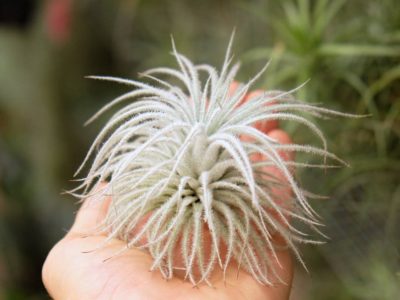

For those who don't like banal indoor flowers, The Village has found the perfect houseplant - atmospheric tillandsia. An air flower - as it is called in English - does not need to be planted in a pot with soil and watered.
Atmospheric tillandsia Is an epiphytic plant, that is, it grows by attaching itself to other plants.
He does not need direct sunlight, create conditions for him close to his relatives - tropical: diffused light and fairly high humidity.
The plant eats in an unusual way: it has practically no root system, so it does not need to be watered, tillandsia feeds through the leaves. If the humidity in the house is not enough, then you need to spray the plant once a day.
Despite the fact that tillandsia has no roots, it still needs a home in the form of another plant or any natural base to which the plant will live - this can be the bark of a tree, branches, litter of moss or coconut fiber.
Crystallization
Falcon and Finch decorators offer growing atmospheric tillandsia on crystal. To attach the plant, you need to grease the dry root with glue and press it against the crystal.
Bark and driftwood
Another option is to place a bark panel with atmospheric tillandsia attached to it on the wall. This composition can be supplemented with other succulents, but since they still need land, it is better not to hang such a "picture" over a sofa or table. A branch or driftwood is also great for tillandsia.
Cork tree
Wine corks are an interesting solution: make a small indentation in them and seat the base of an airy flower there. The corks can be placed tightly in a transparent container or hung one at a time, while nothing prevents the tillandsia from being positioned with the leaves down. But note that you should not immediately turn the plant over - tillandsia needs a little time to gain a foothold in a new home.
Terra cognita, or Terrarium
The Village has already written about Blossom Universe terrariums, they can be a good home for tillandsia. In the terrarium, you can mix shells and pebbles brought from rest, decorative or wild moss, sand, cones.
Clam in the shell
Tillandsia can be planted in a seashell or sea urchin shell. The type of "jellyfish head" looks especially impressive - as if an octopus crawls out of the shell, moving its tentacles.
Weightlessness
If you put airy flowers in transparent vases, their leaves will stretch upward, creating a feeling of weightlessness. This will add lightness to the interior. At the bottom of tall vases, you can lay pebbles - one stone on top of another. This technique will further emphasize the fragility of the plants. The same can be done in a glass with a high stem.
Relive memories
If you do not limit yourself to transparent containers, tillandsia can be planted in any object dear to your heart. Souvenirs, ethnic vases, plates from different countries, figurines, ceramics, cones and bottles are also good. You can even make a house for a plant from a light bulb.
IT'S INTERESTING: Cooking vegetables
Anywhere at home
Flora Grabb Gardens has come up with a special tripod for tillandsias and other aerophytes.You need to attach a flower to the part that opens up with rays, and screw the end of the device into the wall. Another option is to stretch the clear line inside the photo frame. Tillandsia can be placed between the threads, and the frame itself can be placed or hung on the wall.
PREPARATION OF THE MATERIAL: Julia Lukyanova
Content
- Tillandsia species
- Tillandsia care
- Water for irrigation tillandsias
- Top dressing tillandsia
- Planting tillandsias
- Reproduction of tillandsia
Bromeliad family. Homeland South and Central America: Ecuador, Costa Rica, Panama, Guatemala, Nicaragua, Honduras, as well as Mexico (Veracruz, Oaxaca, Chiapas). About 400 species are widespread in nature, representatives of the genus can be found growing near the sea and at an altitude of up to 3000 meters above sea level, in humid forests, coastal forests and even in deserts.
Air humidity
Since epiphytes absorb moisture and feed from the air, moisture levels are extremely important to them. It must be at least 75%. Every morning it is necessary to spray the plant with settled warm water. During flowering, try to keep water out of the peduncle. It can be covered with a plastic bag during water procedures.
With the onset of the heating season, the air in our apartments becomes much drier. If you do not have a humidifier, you are unlikely to be able to maintain a constant high level of humidity by just spraying. Alternatively, you can consider purchasing a special florarium.
Often, flower growers grow epiphytes in the bathroom, where comfortable conditions for development can be created for this plant. You can also use aquariums equipped with artificial lighting, as well as regulators of humidity and temperature. Tillandsias look spectacular in flower showcases, glass vases.
It should be understood that these exotic guests also need fresh air. They should receive it constantly, enjoy its circulation. Rooms in which tillandsia grow must be regularly ventilated. In summer, take flowers out onto your balcony or veranda. Such a walk will be very pleasant for unusual pets. But try not to let the rain get wet or the cold wind flutters the tender shoots. This culture also does not tolerate ice drafts, however, like any houseplant.
Temperature
The temperature regime in summer for terrestrial tillandsias should be in the range from 24 to 28 degrees. In winter it is 18-20 degrees. The temperature should not be allowed to drop below 17 degrees.
For epiphytic species, the optimum temperature is 21-25 degrees in summer and 13-18 degrees in winter.
The room in which the tillandsia is located should be regularly ventilated. It is important to know that it does not tolerate drafts.
Despite the fact that the plant needs a constant supply of fresh air, it should be placed where the air movement will be minimal, for example, on the windowsill behind the blind sash of the window.
Protect tillandsia from sudden changes in temperature. Otherwise, she can shed a significant part of the foliage. It is possible to take a flower out into the garden or on an open balcony only when the weather is warm, so that the night cold snaps do not harm it.
Reproduction
The plant reproduces: children, seeds.
Kids
Appear during the period when the plant begins to fade. Planting takes place in the morning, but it can also be done at the beginning of the day.
The children are carefully separated, placed in a pot of no more than 10 cm. Then they are kept at t + 25 ° C, constantly watering and aerating the seedlings. Flowering - in 1.5-2 years. Potted flower planting video:
Atmospheric propagate by cutting off the shoot from the mother plant. It is enough to fix it on a support. Video for an atmospheric plant:
Seeds
Painstaking and unpopular breeding.
Seeds are sown on top of a moist peat-sandy substrate. Glass or film is placed on top.The containers are placed in a warm, light room at room temperature. After a month or two, shoots should appear.
Tillandsia: home care
The flower requires the following care:
- watering is frequent and abundant for aerial plants without roots. They like a shower or a full immersion in water for a while twice a month. Spraying and maintaining high humidity levels creates ideal conditions for growth and flowering. The water should be purified, soft and slightly acidic;
- you need to feed with special fertilizers for Bromeliads once every two months. The top dressing should not contain copper and boron;
- if the flower has lost its brightness, it is enough to provide it with good lighting, and it will begin to turn green again;
- care during the rest period should be more careful, since the temperature decreases and does not allow excess water in the outlet to evaporate. It is important to ensure that moisture does not stagnate, creating an environment for the development of rot and fungus.
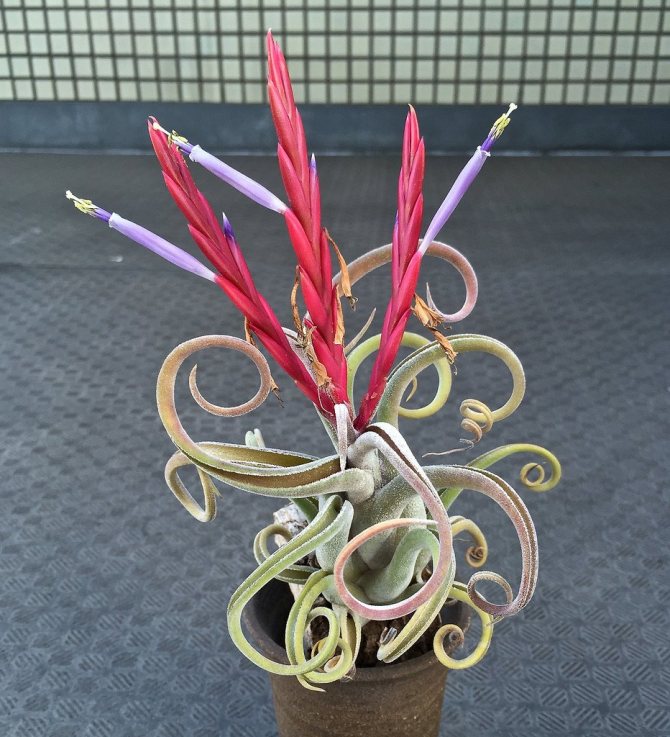

To create outlandish compositions, the tillandsia plant takes the first place among decorators
This unusual exotic does not require so much in comparison with the full return of the beauty and decorativeness of its appearance and exotic flowering. The main thing is to follow the rules described above.
Lighting and temperature
Tillandsia usneiform prefers a sufficient amount of scattered, it grows well in shaded places. But direct sunlight is undesirable for the plant. The room should be well ventilated, but drafts are not desirable.
In summer you can place the flower on a terrace protected from the wind. Indoors, the flower grows best on the east or west side. The temperature regime is suitable moderate within + 18 + 24 ° С.
Flowering and pruning
The only bloom of Anita Tillandsia usually occurs in the summer, but depending on the conditions of detention, this can happen in the fall and even in winter. It lasts up to two months. A peduncle appears first, and then small blue flowers. As they dry, they are cut off, and they also do with withered foliage.
Important! If the tillandsia refuses to bloom, you can spray it with a zircon solution once a week, which will stimulate it to bloom.
Tillandsia care
By the appearance of the tillandsia purchased at a flower shop, you can determine which group it belongs to.
Terrestrial species are sold in pots, in a loose substrate. Outwardly, they look like ordinary indoor plants, with a green rosette of leaves and small roots.
In the wild, terrestrial green species live in the lower tier of the rainforest, on land or organic debris, where there is less light and warmer.
Atmospheric species that do not need soil are designed as decorative compositions, they are attached to stones, bark or pieces of wood. They love the bright sun and coolness, because in nature they grow in the upper layers of the tropical forest.
Location and lighting
In indoor conditions, tillandsias feel good near the east and west windows; shading is required near the south.
There are cases when these plants vegetate well on the northern windows. Species with gray-green and green leaves grow especially well in partial shade.
For atmospheric species that need sunlight, the rays of the morning and evening sun are useful. However, the light should be diffused, it should not be exposed to the open sun.
You can arrange fastenings on a wire bent in the form of supports and place them on the windowsill of the northwest or east window.
In the southern regions, where winter night temperatures do not drop below 4 ° C, tillandsias grow excellently outdoors, in the wind and rain, all year round. In dry weather, they must be sprayed..
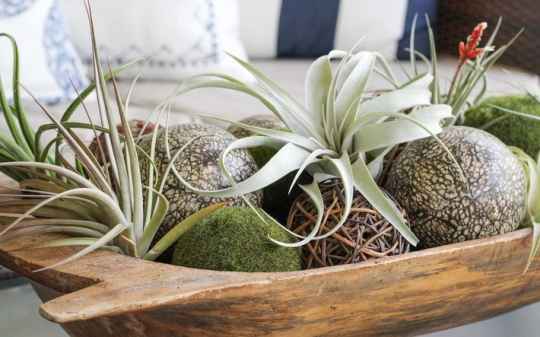

Temperature
Potted species can be kept at normal room temperature in summer, and between 18 and 21 ° C in winter.It is desirable that the night temperature is slightly lower than the daytime.
Atmospheric species prefer cooler winter conditions - 14-18 ° C.
Like many other indoor plants, Tillandsias are contraindicated in sudden temperature changes and cold drafts..
Humidity
One of the main requirements for the successful cultivation of tillandsias is the creation of conditions of high humidity.
Ideally, humidity should be at the level of 70-80%, but in an ordinary apartment the average values are 40-50%. This is enough for the well-being of tropical plants.
You can increase the humidity by installing containers with water, a humidifier, and immersing flowers in water. Daily spraying is required.
Watering and fertilizing
It is best to water with purified warm water. Watering means completely immersing the flower in a flask with warm filtered water for 1-2 hours.
Potted plants are watered in the usual way with soft water, after 10-15 minutes, draining it from the sockets.
Atmospheric species fixed to some surface are not removed from the base when immersed in water, as plants can be damaged.
It is recommended to carry out this procedure once a week. The main thing is to let the water drain so that there is no moisture left in the leaf axils, which leads to decay. If it's raining, you can put the plant out of the window and let it soak in moisture.
To quickly dry the plant after watering, you need to shake it well, then turn the outlet upside down or put it sideways on a napkin and wait until the excess water drains.
Tillandsias do not need large doses of top dressing. It is enough to add fertilizer for orchids, diluted in a minimum proportion, or liquid fertilizer for bromeliads to the water once a month when watering.
Atmospheric species planted on the bark are fertilized even less often - they receive nutrients from the decaying bark.
It is strongly not recommended to use fertilizers intended for ordinary indoor plants..
Spraying
When keeping tillandsia in conditions of low humidity, ordinary rooms require frequent spraying from a spray bottle, at least 2 times a day. Ideally, it is desirable to place it near a humidifier.
In the first year, more frequent spraying is required, 3-4 times a day, because in the greenhouse where the tillandsia grew, the humidity was at 80%. When the plants adapt to the climatic conditions of the room, spraying is carried out less often.
Spray in the morning and evening. At temperatures below 21 ° C, the frequency of spraying is reduced to a minimum - in a cool room, plants dry longer.
Experienced growers do not advise growing tillandsia in flasks, arguing that in natural conditions they grow blown by the winds and washed by rains.
After rain, the plant dries faster in the breeze, and there is no air circulation in the flask.
If you decide to grow tillandsia in a glass or plastic florarium, place moist pebbles on the bottom, which will distribute moisture more evenly and evaporate it more efficiently..
Bloom
Tillandsias are distinguished by exotic flowers of various shapes. The most common colors: pink stipules, blue flowers, blue, purple, pink, yellow.
The plant blooms in the second or third year, and after flowering gives new rosettes. Having given all its strength to the formation of children, the old plant either dies or remains alive, but it will no longer bloom.
After the bracts have lost their decorative effect, the peduncle is removed.
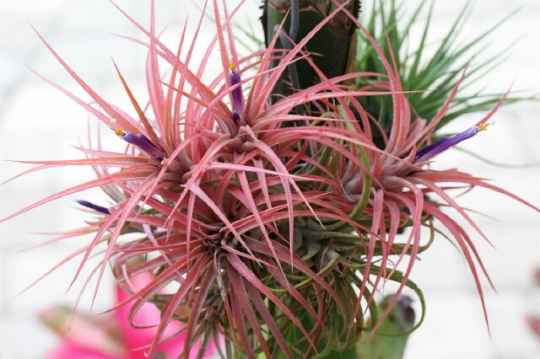

Transfer
There are two options for transplanting - into a substrate and without it. Atmospheric views are attached to untreated wooden blocks, driftwood, felt, coconut fiber.
The substrate for green species is made up of tree bark, moss, akadama - clay granulate.
Reproduction
The main breeding methods are seeds and daughter rosettes that appear after flowering.The mother plant has 3 to 8 outlets. When the babies reach 6-8 cm in diameter, they are separated and transplanted.
If the children are not separated, a curtain in the form of a pretty ball may form.
Epiphytic plants propagate only vegetatively. Potted plants can also be propagated by seeds, but this is a rather troublesome process - the seeds germinate well, but young tillandsias grow slowly and often die.
Two types of plant
Tillandsia is divided into two types - atmospheric and potted. The varieties belonging to the first have fewer roots, they grow, as a rule, on poles or snags. Leaves of various colors - from grayish to green tones, oblong, length - 25 cm, width - 1 cm. Potted plants take root in the ground. The leaves are flat, covered with narrow green scales, there are smooth ones up to 40 cm. The inflorescence is spike-shaped, bright pink.
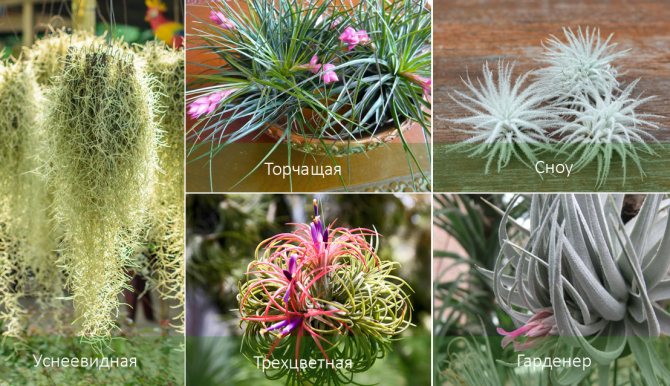

Atmospheric views of tillandsia
The soil
Land plants need loose soil that allows water to pass through well.
Ready-made substrate for orchids or bromeliads is suitablebought in a store.
You can prepare the mixture yourself by taking leafy soil, peat and chopped sphagnum moss in equal proportions.
Good drainage is essential - it should take up a third of the pot.
It is useful to add charcoal to the drainage mixture. This will help prevent the growth of fungi that cause the plant's roots to rot.
Tillandsia is successfully grown in soil of the following composition:
- Leaf humus;
- Chopped pine bark;
- Peat;
- Fern roots;
- Sphagnum moss.
The components of this soil mixture are taken in equal parts.
Testimonials
Atmospheric tillandsia is becoming more and more popular with domestic florists. And users leave positive reviews about it. They note that the plant is unpretentious and does not cause much trouble. In addition, it looks very impressive and original, and becomes a living decoration of any interior. Of the shortcomings, only the exactingness to high air humidity is distinguished. But this problem can be solved in simple and affordable ways.
Provide proper care for atmospheric tillandsia at home, and it will surely reward you with its fast growth and attractive appearance. To do this, adhere to the basic rules of growing this crop, and strictly follow the necessary agrotechnical measures.
Diseases
Atmospheric tillandsia is at risk of contracting fungal or viral diseases. Especially dangerous are gray rot. The cause of the disease is trivial - the mistakes of the grower when growing an exotic plant. The leaves become transparent, spots appear on them, they begin to turn black. Or the base of the outlet starts to rot.
The most likely mistakes in keeping tillandsia at home:
- The room humidity is too low, the leaves of the plant are twisted. It is necessary to increase the humidity in a room with an epiphyte by any means - spray tillandsia, bathe, put on wet moss.
- Your pet is stuck in an unfortunate place and suffers from direct sunlight. Move the plant to partial shade or under the scattered rays of the sun;
- When airing a room, you create frequent drafts that are harmful to the flower. It is necessary to ventilate the premises, but try to maintain the usual temperature, avoiding sharp fluctuations;
- Your epiphyte has a rotten base of the socket. Perhaps he lives in a beautiful vase, but you forget to drain the excess water from it. Avoid prolonged waterlogging of the epiphyte site. Another possible reason is watering the plant with water and fertilizer.
Epiphytes do not water or pour fertilizer into the planting container. Fertilizers are added in small quantities to sprayers, and through spraying the leaves and shoots, the plant receives the necessary nutrients.In addition, fertilizers can be dissolved in a container for bathing a flower (do not forget to reduce the rate by 4 times from that indicated on the package). Analyze your actions. Correct mistakes and avoid them in the future. Treat the diseased plant. Remove the damaged parts of the flower and spray the plant with copper-containing preparations. We are sure you will succeed and everything will return to normal. Atmospheric tillandsias are quite unpretentious and responsive to careful home care and proper maintenance.
Types and varieties
Gardenia jasmine - home care after purchase
The most popular among Russian florists:
- Tillandsia Anita. This species is hybrid, it is loved and bred for its colorful flowering. Home care for Anita Tillandsia comes down to providing warmth, which all bromeliads love, and high humidity. Nutritious and light soil should be constantly moist, air humidity not lower than 60% for comfortable growth. The lighting is not bright, diffused light. You can fertilize by spraying, since these plants feed through the leaves, not the roots.
- Tillandsia usneiform is an aerophyte that does not have a root system. It feeds exclusively from the air, which must be sufficiently moist and fresh. In summer, the temperature should not be higher than 22 ° С, in winter, not lower than 15 ° С. To maintain optimal humidity, it requires spraying up to five times a day, but it will reward it with the rapid growth and decorativeness of its falling silver lashes. Propagated by shoots.
- Tillandsia atmospheric in care is unpretentious, if you create the appropriate conditions. Leaves are fleshy, gray due to small scales. It perfectly tolerates partial shade, but it needs a constant flow of fresh air, as well as 70% humidity. The temperature regime is needed 22 ° C and 15 ° C in summer and winter, respectively. Loves temperature changes at different times of the day, similar to the natural change of day and night. You can take it outside in summer, hanging it on trees, shrubs, verandas.
- Tillandsia blue. In the wild, it grows on the bark of trees, but at home it can huddle in a pot, but in an airy substrate. Loves light, but not direct sunlight. With a lack of light, it loses the rich color of leaves and inflorescences. Watering is not needed often, it requires more moisture through spraying, but without stagnation of moisture at the base of the leaves. After flowering, the blue beauty begins to grow overgrown with children, slowly dying off, therefore, does not require a transplant.
- Tillandsia xerographica has succulent, rigid leaves, possessing a decorative silvery rosette. It can grow up to 50 cm in height. Has the ability to accumulate moisture in its curled leaves. It requires frequent watering and moisture in the fresh air, since it does not have a root system.
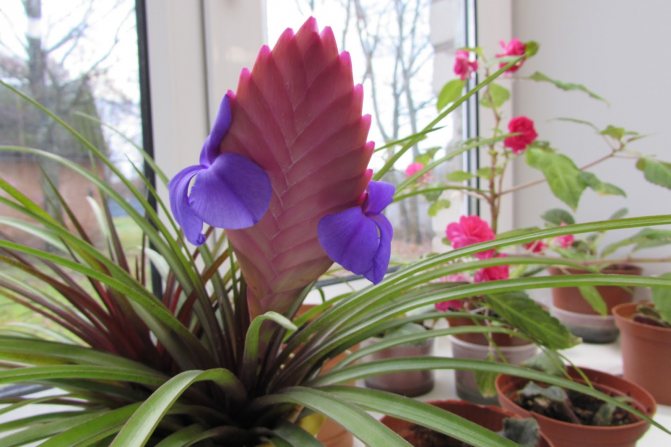

Tillandsia Anita: flower and peduncle
- Tillandsia Head of Medusa. Quite common bromeliad due to its unpretentiousness and decorative effect. It resembles a bulb of densely collected leaves, which only deviate at the top and begin to curl in a spiral. It has no roots, it feeds on the type of all atmospheric species.
- Tillandsia Cotton Candy - aerofit, easy to clean. It adjusts to the temperature of Russian apartments, in winter it can tolerate a decrease to 12 ° C. Watering is not needed often, spraying every other day. Demanding only on the light: there should be a lot of it, it grows even in direct sunlight.
- Tillandsia Samantha is a bright evergreen representative of the species. Saturated glossy leaves and voluminous colorful blooms allow her to be demanding in care. It can grow in a pot or pots, but the root is developed only as a fastener. Frequent watering and spraying without moisture accumulation in the foliage is all she needs for nutrition. Good lighting and fresh air will create all the conditions for Samantha to bloom.
- Tillandsia Ionanta, or violet-flowered, is an unusual species with beautiful flowers.It often grows in florariums, as it is a small bush. Likes to swim once every half a month under the shower or in full immersion baths. Requires abundant light, but not bright rays.
- Bulbose has stems, which means it tends to store moisture in its thick stems that look like bulbs. Atmospheric exotic is very easy to care for, requires abundant watering, humidity and diffused light. The temperature is moderate, winters without whims. Blooms continuously in the summer months.
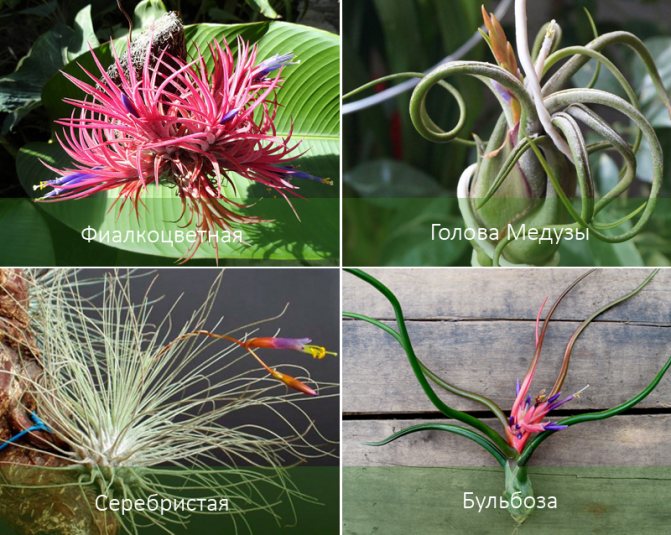

Species and flowering
Prevention measures for Tillandsia infection
Tillandsia, with proper care, is less exposed to various pests and diseases. Simple preventive measures will reduce the risk of infection:
- Purchased plants are quarantined for 20-25 days.
- Weekly check-ups for signs of infection.
- Free placement of pots on the windowsill.
- Cleaning the plant and airing the room.
- Balanced watering.
- Top dressing and fertilizers.
- Preventive and disinfecting soil treatment, pots and tools.
Flowering tillandsia
In order for bright inflorescences to appear on the plant, it is necessary to acquire decorative species intended for growing in pots. A distinctive feature of such plants: long, narrow leaves, painted in pinkish, purple or brownish shades.
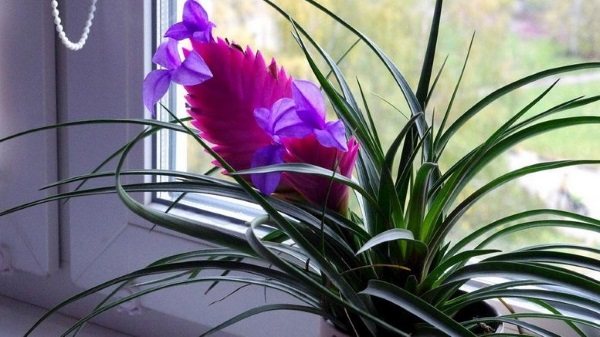

The flowering period of the exotic beauty begins in summer. At this time, a tall, bright pink peduncle appears on the plant, resembling an ear in shape. The bracts surround the inflorescences very tightly. At the same time, no more than two blossoming flowers can be seen on Tillandsia.
Atmospheric tillandsia blooms once in a lifetime, and this happens when the plant is two or three years old. And after the formation of buds, the tropical guest spends all her energy on the formation of children, and she herself dies.
The flowering of tillandsia looks very exotic: the plant releases an ear, on which brightly colored buds alternately open. Each of them does not last long, but the flowering itself can last for several months. In addition, the ear looks very decorative, even after the last bud leaves. Therefore, it is not necessary to cut it out, because over time it will die along with the mother plant.
Caring for tillandsia during and after flowering is the same as usual. It is necessary, as before, to regularly spray and water the flower so that it grows up children. Each specimen gives from 3 to 8 lateral shoots, which makes it possible to create a large collection of these exotic plants.
The color range of inflorescences depends on the variety and type of plant.
Pests
Insect pests rarely appear on these wonderful plants in indoor conditions. After all, they are surrounded by attention, constantly sprayed, often bathed, ventilated, taken out for a walk. But, nevertheless, tillandsia, including atmospheric ones, occasionally attack mealybugs and bromeliads. Their presence can be seen with the naked eye. Remember to check your pets regularly. If you find insects - a cobweb on the leaves, sticky traces of their vital activity, white bloom or bumps on the leaf blades - take urgent action. From folk methods, you can recommend spraying or, better, bathing in a soapy water solution of tillandsia leaves. You can try to remove the scabbard from the leaves and stem using alcohol cotton swabs, although this procedure is problematic on the thin delicate leaves of tillandsia atmospheric. If folk remedies did not help, or you discovered parasites too late, and they multiplied, start treating the flower with chemicals - insecticides. There are a large number of them on sale, but they are so good that they are suitable for almost all parasites. Just read carefully the recommendations on the packages.
If you have acquired tillandsia without roots, epiphyte, you have acquired a miracle of nature! Now you will constantly admire its extraordinary appearance, rejoice at its property - to live without roots wherever you want to place it. With the help of this unpretentious exotic, you can decorate any corner of your apartment, even a bathroom. Surely, tillandsia will amaze your guests and become the pride of your collection of indoor flowers.
Growing problems
If you provide proper care for atmospheric tillandsia at home, then there will be no problems with it. But if you regularly violate the norms of agricultural technology, then the tropical guest begins to be capricious. Most often, flower growers are faced with the following problems:
- The leaves of the plant are twisted, the tips are withered and yellowed. Lack of watering, too dry indoor air, or the use of hard water leads to a similar phenomenon. Normalize the irrigation and remember to spray the crop more often and it will recover quickly.
- Tillandsia does not produce buds. The plant may refuse to bloom if it lacks light and warmth. Transfer the culture to another place with more suitable conditions, and, if necessary, arrange additional lighting with a phytolamp.
- The base of the socket has rotted. Excessive watering, or excess fertilization, leads to a similar phenomenon. In addition, contact with contaminated material can cause decay. Change the support immediately to save the plant. If there are children, then attach them to other stands. In no case do not use fungicides to treat the bark, because they will be absorbed into the material and will gradually poison the flower. If you want to disinfect the support, then pour boiling water over it or dry it in the oven.
Pruning
The plant belongs to annuals and after the flowering period begins to dry out slowly. However, flower growers advise not to cut the peduncle.
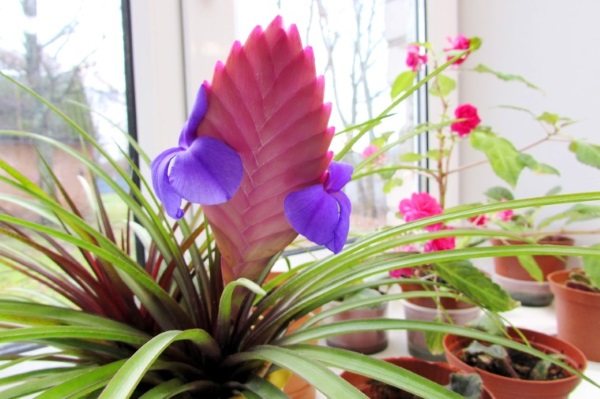

After some time, children appear on it, when young plants reach a height of 10 cm, you can do it in two ways:
- Carefully separate them from the mother bush and plant them in separate flowerpots;
- Leave it to grow on an adult shrub, soon the mother plant will completely dry out, and in return, two full-fledged tillandsias will grow in the flowerpot, which in two years will delight you with bright flowers.
Features of morphology
The plant has long, thin, drooping and branching stems of a silvery-gray color, covered with silvery hairs. The hairs are in the form of scales or miniature shields and absorb the moisture needed by the plant from the air, dew and rain drops. Its appearance resembles a lichen from the genus Usnea (Usnea).
The leaves are sharp, silvery, trough-shaped and equidistant, similar to stems. Yellowish-salad flowers are small, inconspicuous and hidden between leaves, appear in summer. They form 1-3 flower inflorescences growing in the corner of 2-3 bracts.
One flower has a three-piece calyx, a yellow-red three-petal crown, 6 stamens and 1 pistil. The fruit is an elongated capsule with very small seeds.
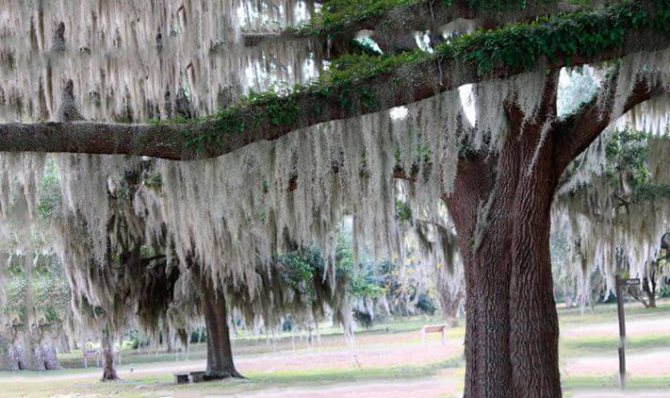

Conditions for growing at home
As already mentioned, tillandsia is notable for the fact that it can be placed in all kinds of containers and even simply attached to any solid surface. However, caring for atmospheric tillandsia is more difficult than for potted plants.
Important! The soil for the tillandsias in question is not needed and even harmful, since it prevents contact with air and leads to decay.
Location
Whatever container or support you use for tillandsias, first of all it should be remembered that the bottom to which the plant is attached must be lined with materials such as:
- bark (including pine);
- moss;
- coir.
Trendy methods of placement on crystals, in glass balls, shells look impressive, but we must not forget about the comfort for the plant."Atmospheric plants" do not grow well on smooth, slippery, non-breathing surfaces, so it is better to create a cozy "nest" for tillandsia. The popular placement of the flower on wine corks does not justify itself due to the slow growth and the tendency to smaller flower rosettes. Tillandsia does not adapt well to attachment to beech and oak branches and blocks.
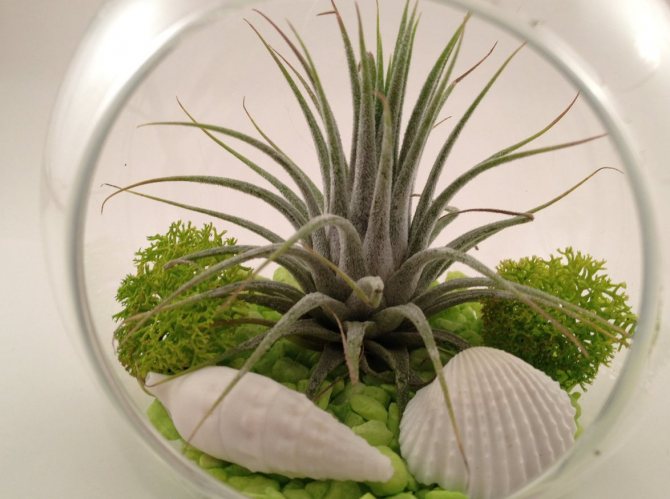

A list of the best possible growing locations includes:
- Pine branches. In this case, a layer of coconut fiber is laid between the branch and the flower, or a mini-nest made of synthetic materials is attached to the branch, which helps to retain moisture and ventilation.
- Hanging plastic pots.
- Bamboo / spruce / willow / sycamore / jute baskets.
- Mesh pots.
- Wall panel made of pine bark with tillandsia attached to it.
- Coconut rods.
- Aquariums (in no case closed, for air circulation).
The most common way of attaching tillandsia to a support is by screwing it on with PVC sheathed knitting wire. It retains its shape well, does not rot, does not slip. It is not recommended to use glue, even special floristic glue, as it blocks the pores of the plant, which can cause the death of the flower.
Important! When purchasing tillandsia, you need to immediately determine the location of its placement, so as not to injure the delicate stems with unnecessary movements and tying.
Temperature
In general, tillandsia accepts well the microclimate of city apartments.
The main requirements for the temperature regime are as follows:
- Absence of sharp drops.
- The air temperature is not less than +18 ° С (but they are able to withstand a short-term decrease to +12 ° С).
- Regular access of fresh air, ventilation (no strong drafts).
- In summer, it can be placed outdoors, protecting from precipitation.
Lighting
Proper lighting plays an important role in growing these plants. Unlike potted tillandsias, "atmospheric" do not require too bright light, direct sunlight is unfavorable for them. Placement in partial shade, diffuse or completely artificial lighting is quite suitable for them. In any case, the distance from the plant to the light source should not be less than 90 cm.
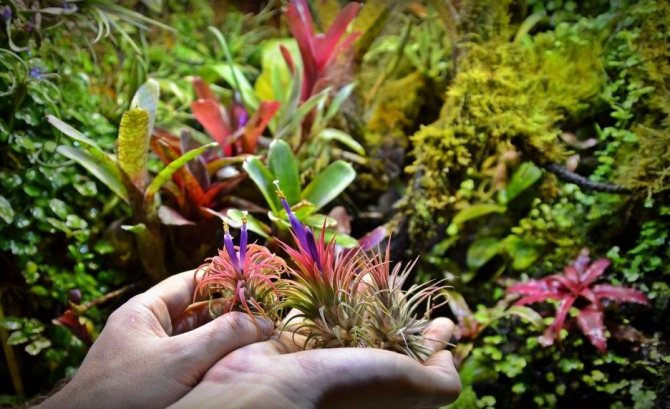

Air humidity
As tropical plants, tillandsia require a consistently high air humidity of at least 70–80%, due to the adsorption of moisture by the leaves. Special attention should be paid to this factor in winter during the period of functioning central heating. It is best to use humidifiers during this time. This is especially true for those varieties that grow in areas with very high humidity (for example, violet-flowered tillandsia). Usually these species have very delicate, thin leaves. Some growers grow epiphytic tillandsia in the bathroom. However, the leaves should not be allowed to be constantly wet, otherwise the flower will get sick.
Did you know? "Air" tillandsia thrive in tropical deserts (for example, Peruvian), where there is almost no precipitation. The secret is that high humidity is constantly maintained by winds from the ocean.
Diseases and pests
A healthy plant is usually not prone to infestation with scale insects and mealybugs. Pests can appear in a flower that is weakened by transplantation or errors in care. To save tillancy, all parts of it must be washed with soap and water, dried and applied with insecticides.
Fungicides are used to treat a flower when a fungus has overcome it. This disease is also a consequence of non-observance of the correct conditions for keeping tillandsia.
Indoor tillandsia cannot be called a whimsical plant, but for its healthy growth and development, minimum requirements must be observed, taking into account the flower's needs for lighting, moisture and nutrients. Only then will she delight the eye with her exotic beauty for a long time.
Features of seasonal care
In the summer months, the plant is recommended to be exposed to fresh air, which will activate vital processes.
Atmospheric tillandsias are recommended to be placed in the shade or partial shade. For green flowers in spring and summer, bright, diffused lighting is needed. From mid-autumn until the end of winter, they are exposed to a sunny place, if necessary, they are illuminated with artificial lighting.
Temperature conditions are as follows:
- from March to October - optimally +20 .. + 30 ° C during the day and +16… 18 ° C at night;
- from November to February recommend temperatures from +14 to + 18 ° C.
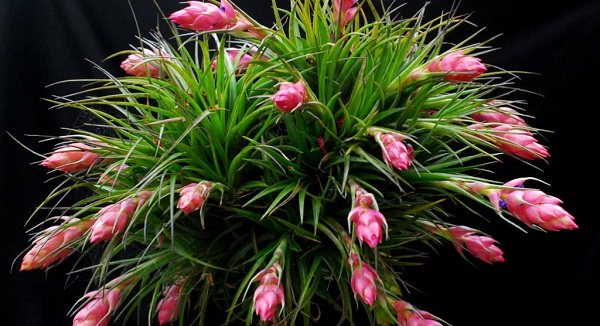

Reproduction of tillandsia
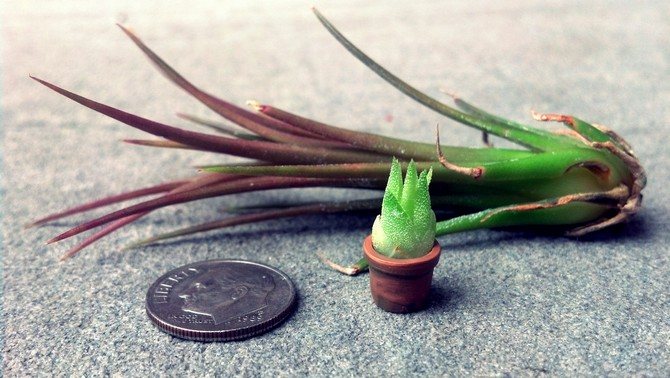

At home, you can get a new young tillandsia plant from children or from seeds. The first method is the most common and easy to use, since more time and effort will have to be spent with seeds.
Reproduction by children
Side shoots of tillandsia are often called babies. They begin to appear vigorously when the mother plant blooms. To preserve the flower, after it has bloomed, you need to plant separately young ten-centimeter shoots, which have roots. The mixture for them is prepared by mixing peat and sand in a 1: 1 ratio. It takes about 2-3 months for such a baby to fully root and strengthen, after which the shoot can be transplanted into a permanent pot with soil mixture for orchids. The process can be simplified if the maternal tillandsia has one daughter shoot - the old plant is simply removed, leaving the baby to grow in the same soil. Anita's tillandsia planted in this way will start flowering in 2 years.
Tillandsia epiphytes reproduce even easier - by dividing into bundles. The parts collected in this way are inserted into the prepared supports with wet moss, where they can continue their growth.
Seed propagation
Tillandsia seeds can be harvested by yourself or purchased from a store. The germination container should contain a mixture of peat and sand, which must be well watered before sowing. The seeds do not need to be sprinkled, they are simply spread evenly over the surface. The entire container is placed in a bright place and covered with transparent film or glass. The seed temperature should not deviate much from 25 degrees. After planting, the shoots will sprout in 4 weeks, and such a plant will bloom in 5 years.
Homeland and appearance
Under natural conditions, tillandsia mainly grows in the southern part of the United States of America up to Chile. Tillandsia can be found in a wide variety of climatic zones. It grows in the tropics, savannas, swampy areas, semi-desert and even on the border of permafrost. That is why the external signs and growing conditions for different varieties of flowers differ so much among themselves.
Tillandsia combines epiphytic plants and terrestrial species. In this regard, the external variety of the flower is very great. Under natural conditions, the plant is attached to the base - trees or stones with the help of its root system. In this case, the feeding process occurs through the leaves. These types of tillandsia are considered epiphytes.
Some types of flower have a stem, and some varieties have leaves collected in a rosette.
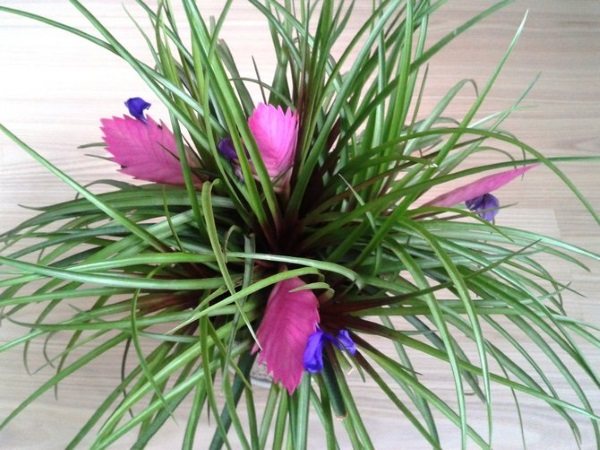

The sheet plates also differ. You can find plants with narrow and elongated gray leaves. The width of the sheet reaches 12 mm, and the length varies from 5 to 25 mm. The lamina may be covered with scales that absorb essential nutrients from the air. There are also types with dark green leaves, in some cases with a brownish or reddish tint. The length of the sheet plate reaches 40 mm.
The spike-shaped inflorescence is located in the center of the rosette of leaves, has an oval shape, surrounded by bracts of a bright shade. The flowers are small in size, usually bluish or purple in color. The petals are pointed and slightly bent.
After flowering, the adult tillandsia slowly dies, but forms several daughter plants.
Useful properties of tillandsia
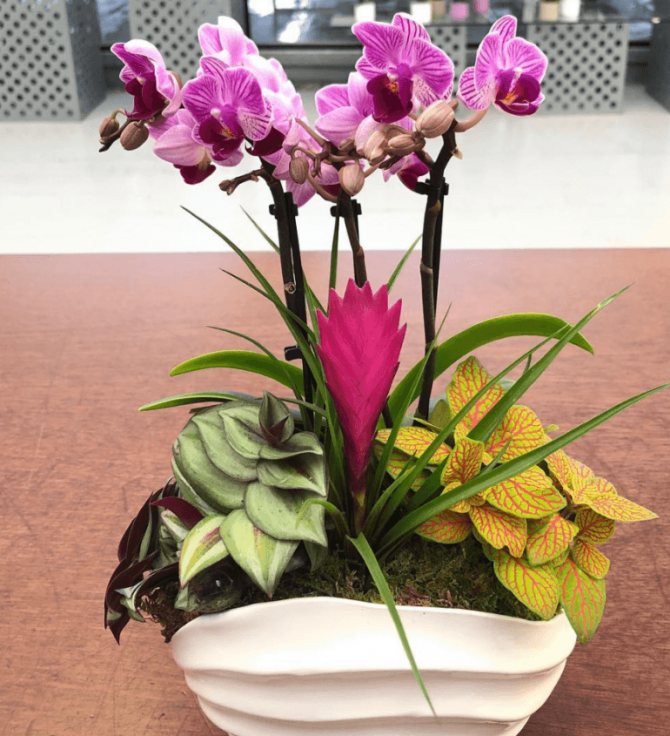

Tillandsia concentrates energy in itself, emanating from the external environment (people, objects), improves it, and during flowering generously distributes positive charges. The energy of the flower is directed from the roots to the stem; surrounding the leaves and flowers with an invisible spiral, it spreads around the plant with powerful energy currents.
There is a surge of strength next to him. The flower brings great benefits, purifying the air and absorbing extraneous noise in the room. In South American countries, plants weave furniture from hard leaves, they are stuffed with pillows and mattresses.
Care errors and their elimination
Tillandsia is a fairly hardy flower when it grows in nature, but after purchase, transfer to a new place, to an apartment, the plant may wither due to improper maintenance and care.
Possible problems when growing tillandsia and methods for their elimination:
| Problems | The reasons | Elimination |
| The foliage turns pale, curls up | Insufficient and untimely watering | Water and spray regularly with settled water |
| A white bloom forms on the flower, the buds fade | Cold, hard water is used during watering. | Water the plant with warm water, adding 2-3 drops of acid (acetic, citric) per 1 liter of liquid |
| In tillandsia, the tips of the leaves become brown. | Improper watering, the room is cold | The regimes of timely spraying are observed, the air temperature in the room is monitored (+ 20-25 C). |
| The foliage is falling off the houseplant | The problem may arise due to drafts, insufficient amount of light, with rotting of the root system | They do not allow sudden changes in temperature, provide correct lighting (in winter, ultraviolet lamps are used), select the substrate of the required composition, pour water from the sump on time |
| Brownish and grayish spots appear on the foliage. | A fungal disease develops | Timely application of fungicides: Skor, Topaz |
| The leaf rosette turns brown and disintegrates | Negative reaction to over-watering | Moistening the soil is replaced by spraying: in the morning and in the evening, the temperature in the room should be + 20 ° C |
| Tillandsia died | The phenomenon develops with many representatives of bromeliads after flowering | To revive an exotic plant, you need to pinch off the grown processes (children) from the mother flower and transplant |
Planting and transplanting
Anthurium - home care after purchase
A plant that has just been brought from the store is best transplanted. If the acquired plant has released an arrow of a peduncle, the transplant can help to dry the flower. After 3-4 years, in the absence of flowering, potted species can also be transplanted. In the wild, this handsome man grows on the top layer of the earth or on the bark of trees; the mind does not need soil as such.
Important! In normal soil, the plant rots.
For planting and transplanting a plant, pieces of bark are needed with the addition of moss, peat, sand, akadama, river pebbles, coconut fiber. The pot should be taken wide and low, the smallest size relative to the plant. Clay and ceramic pots will keep the root system from choking in the soil.
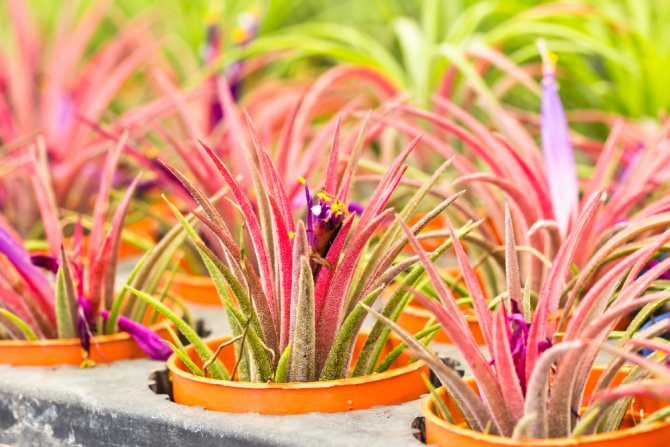

Plastic pots should have many drainage holes
How to transplant:
- The soil and the pot must be sterilized in the oven or with steam.
- Taking the plant out of the pot, carefully examine its roots. If dry or decayed areas are present, remove and treat with charcoal.
- Dried or old bottom sheets are removed during transplanting.
- Charcoal should be used as a drainage layer.
- Pour the soil mixture on top, then plant the plant steadily and cover with the rest of the soil.
- If the top roots are sticking out of the pot, you can cut them off.
Atmospheric species do not need soil, they feel great when suspended. They are hung on a wire, soft tape or rope. Also, a flower can cling to pieces of bark, stones covered with moss, or shells with its roots.
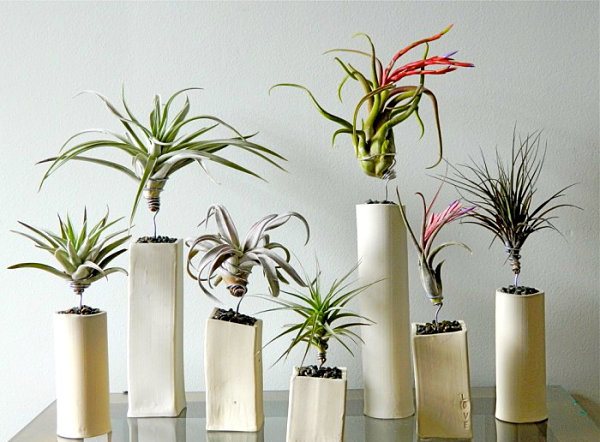

Option for placing atmospheric views on stands

